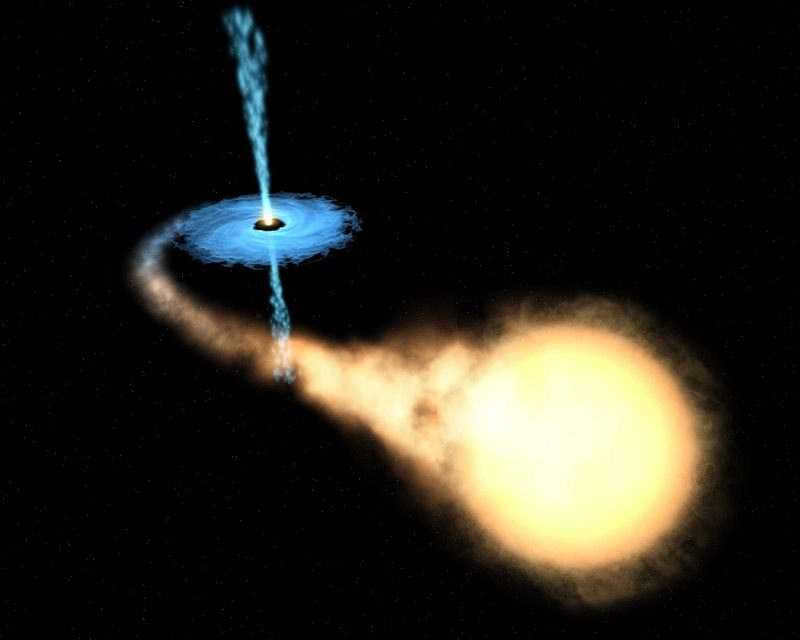Is it possible to decelerate the speed of light – White dwarfs, neutron stars, and the general theory of relativity – What exactly is a singularity – “A star will infinitely shrink!” – “Black holes” or “frozen stars”.
The 19th century signifies the era of scientific triumph. Scientists no longer relied on mere speculation as they did in previous centuries; instead, armed with a wealth of knowledge, they made accurate predictions. An exemplary case is Urbain Jean Joseph Leverrier. Rather than scanning the celestial heavens with a telescope, he computed the orbit of Neptune based on observations of neighboring planets and Newton’s theory of gravity.
Is it possible to decrease the speed of light?
However, there were still unresolved queries. The fact that the paths of the planets remained slightly different from the ones predicted by Newton’s and Kepler’s laws. Additionally, Mercury’s perihelion position deviated from the predicted position by a significant 43 arc seconds per century!
Therefore, when Albert Einstein developed the theory of relativity and started working on the theory of gravitation, it was not a mere whim. It was a genuine question that demanded an answer.
Einstein soon demonstrated that the perihelion of Mercury should undergo a precise shift of 43 angular seconds per century. Furthermore, the general theory of relativity predicted that a beam of light, previously believed to travel in a straight line, would actually be deflected from its original path when encountering the gravitational field of a massive object.

The speed of light cannot be decreased, but we can observe the “decrease” in a photon’s speed by the decrease in frequency and, consequently, the “reddening” of the spectrum.
It couldn’t be any other way, as a photon – a quantum of light – is a completely material particle, just like other material objects, it must abide by the law of gravity. While nobody knew the exact mass of a photon, physicists already knew how to measure its energy. Based on the principle of equivalence, it followed that the energy of an object is equivalent to a specific mass – recall the famous equation E=MC 2 !
It signifies that a beam of light, similar to a conventional stone, must travel along a curved path in the presence of gravity, which can be calculated.
Another intriguing query arose: when you throw a stone upwards, it gradually decelerates, expending its kinetic energy to overcome gravity. Eventually, all the energy is exhausted, causing the stone to momentarily come to a halt and then fall back down. However, a ray of light emitted in the opposite direction of gravity must also lose its energy.
Nevertheless, a paradox emerged – a photon, which is a particle of light, cannot move at a speed different from the speed of light because the speed of light is a constant! It turns out that the photon behaves in a unique manner. Unlike a stone, it experiences energy loss differently – the photon “shifts towards red”.
Based on the theory of quanta, which was also developed by Einstein in 1905, the frequency of a photon is directly related to its energy. A decrease in energy corresponds to a decrease in frequency. The frequency of a photon determines its color. Therefore, the color of a light beam can change. As the beam of light travels through a gravitational field, it shifts from blue to red, with the degree of shift increasing as the strength of the gravitational field increases. This phenomenon is known as gravitational redshift.
In 1919, Arthur Stanley Eddington made a groundbreaking observation during a solar eclipse. He noticed that the stars located near the edge of the solar disk, which were obscured by the Moon, appeared to have moved from their original positions. This discovery indicated that when a beam of light from a distant star passed close to the Sun on its way to Earth, it was deflected from its straight path. The measured displacement of the stars’ positions closely matched the predicted effect.
Furthermore, five years later, Eddington proposed that the spectral lines of elements in the spectra of white dwarfs would be shifted towards the red side. This is because white dwarfs are the most densely packed stars, with a gravitational field on their surface that is a million times stronger than that on Earth’s surface. Thus, the redshift of light emitted from a white dwarf would exhibit the maximum possible redshift.
Eddington performed a precise calculation of the exact amount by which the spectral lines ought to shift towards the red side. In the same year, 1924, Walter Adams examined the spectra of the white dwarf Sirius B and discovered that the anticipated red shift coincided precisely with the predictions made by the theory.
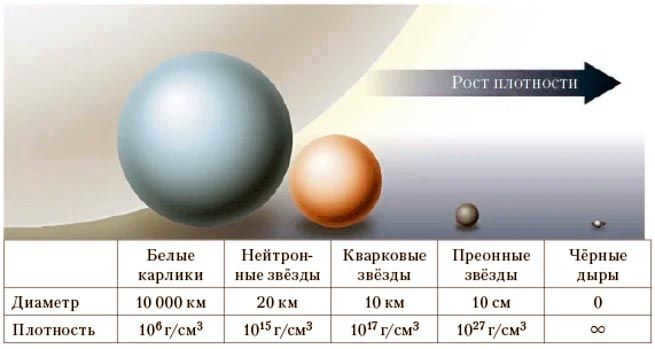
Approximate densities of different supermassive celestial objects: white dwarfs, neutron stars, quark stars, and more.
The white dwarf measures approximately 10 thousand kilometers in size and already exhibits the effects of the theory of general relativity. It appears that these effects are essential for accurately calculating both the maximum mass of a white dwarf and the shift of lines in its spectrum. This is even more crucial when considering a neutron star, which, according to Zwicky’s predictions, is expected to be a hundred times smaller in size! Consequently, the gravitational field on the surface of a neutron star must be a hundred times stronger!
The more closely the body’s speed of motion approaches the speed of light, the more pronounced the impact of the theory of relativity becomes. The second cosmic velocity, also known as the “escape velocity,” can serve as a measure of the intensity of the gravitational field. As the gravitational field increases, the speed required for a body to break free and venture into space also increases.
To permanently depart from Earth, you must achieve a velocity of 11 km/s. In order to escape the Sun’s gravitational pull and soar into space, a speed of 600 km/s is necessary. Breaking free from the immense gravitational force of a white dwarf requires a staggering velocity of 5,000 km/s. Notably, in the realm of white dwarfs, the profound effects of the general theory of relativity become palpable. Escaping from a neutron star demands an astonishing acceleration of 100,000 kilometers per second, a mere three times the speed of light. If the size of a neutron star were reduced by a factor of three, the escape velocity from its surface would equal the speed of light, rendering escape utterly impossible….
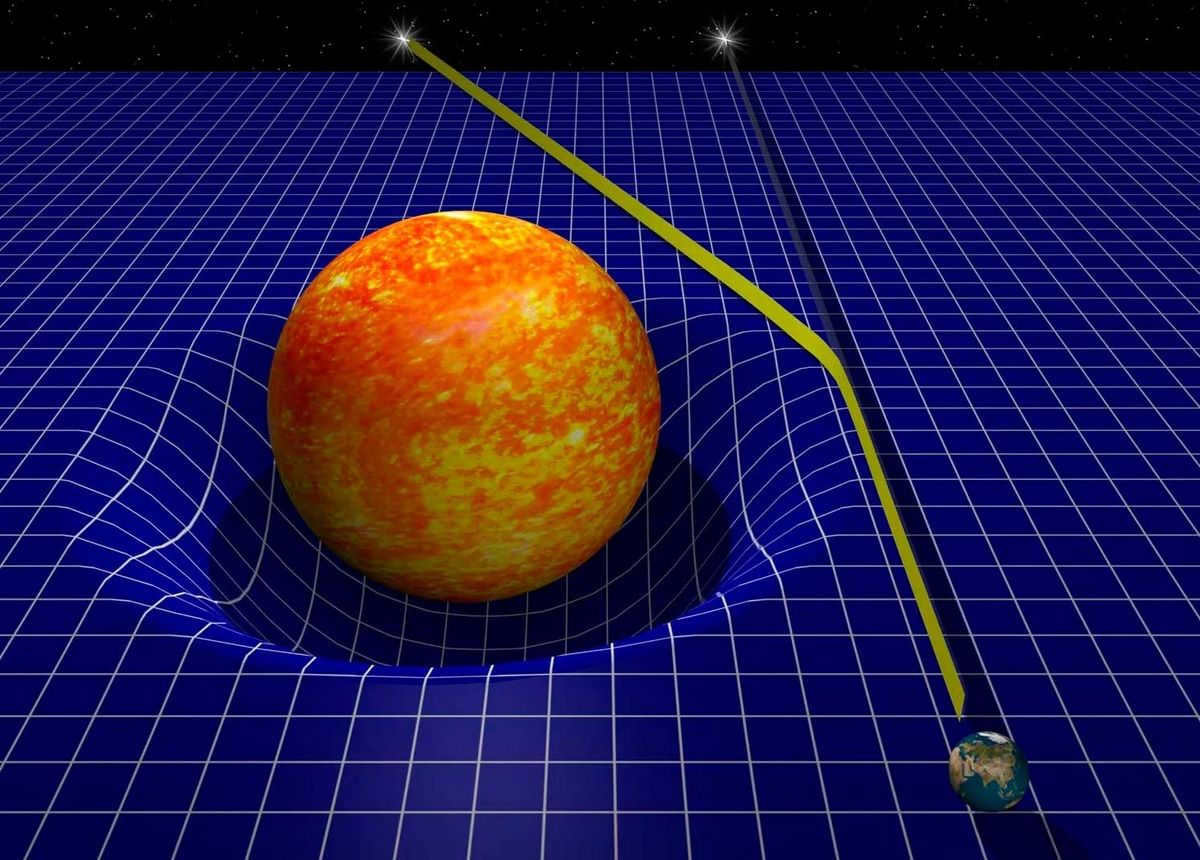
The deflection of photons of light by the gravity of a massive object allows us to determine the mass of the object. However, this reasoning does not apply to neutron stars, as they cannot have such a small size. We will discuss this further later on. Nonetheless, the concept itself was first proposed by the English physicist J. Michell in the 18th century and was later written about by the renowned Laplace.
In 1916, Einstein completed his theory of gravitation. He formulated equations for the gravitational fields that would simplify to Newton’s law of universal gravitation if the fields were not strong. However, the terms “strong” and “weak” themselves are just words, and in order to assign them physical significance, a numerical value must be used to describe them. Let’s assume that if the gravitational field is greater than a certain value “x”, it is considered strong, while if it is smaller, it is considered weak. The problem of a star’s gravitational field served as a test scenario for the theory of gravity.
What is a singularity?
In 1916, after reading Einstein’s newly published paper, the German astronomer Karl Schwarzschild decided to manipulate the equations of the general theory of relativity to describe the gravitational field of a star, specifically the gravitational field outside a spherical body, as long as the body did not rotate. Schwarzschild derived an equation for the critical value at which the gravitational field can be considered superstrong.
Interestingly, this mathematical expression turned out to be identical to the one obtained by Laplace for the radius of his hypothetical invisible star. And thus, a peculiar phenomenon occurred. There emerged, in the words of mathematicians, a singularity. In other words, a region where the gravity field becomes infinite.
The law of universal gravitation in Newtonian theory also presents a singularity. When the distance between two bodies is zero, the force of attraction between them is said to be infinite. However, in reality, it is impossible for the distance between bodies to be exactly zero.
In the general theory of relativity, Schwarzschild discovered that gravity becomes infinitely strong at a finite distance, not at zero. If a star is compressed to a critical size, the gravitational force on its surface will become infinitely large. This critical size is known as the gravitational radius or Schwarzschild radius.
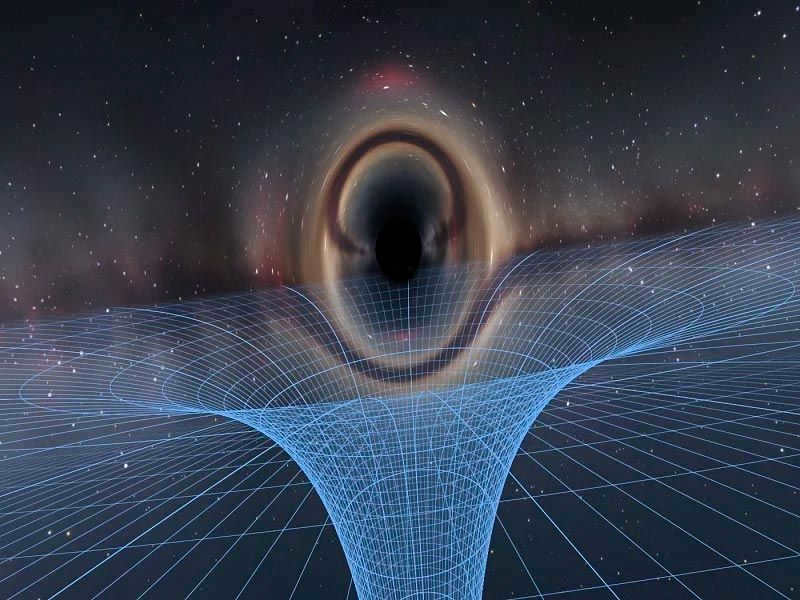
The mass of the star is the only factor that affects the Schwarzschild radius formula. As the mass of the star increases, so does its gravitational radius. The Sun’s gravitational radius is 3 kilometers. Keep this number in mind – it is sufficient to know the star’s mass relative to the Sun’s mass, and by multiplying the mass by three, we can determine the gravitational radius of the star in kilometers.
Therefore, if the star’s gravitational radius is slightly larger than the gravitational radius, it is considered to have an extremely strong gravitational pull.
The gravitational radius is dwarfed by the Sun’s radius, which is 200,000 times larger. Although the effects of the general theory of relativity are minimal, they can still be measured – as evidenced by the deflection of light beams in the Sun’s gravitational field. Despite this, the Sun’s gravity field is predominantly described by Newtonian theory.
However, a neutron star has a radius of only 10 km, which is 2-3 times the gravitational radius. The gravitational force is extremely strong, so the general theory of relativity is necessary. So, what is the density? It can be easily calculated by imagining compressing the Sun to the size of its gravitational radius, which is 3 km. By dividing the mass of the Sun by the volume of a sphere with a radius of 3 km, it can be determined that the density of this compressed form is 2 x 10 16 g/cm 3 . In simpler terms, it means that there are 20 billion tons of mass in each cubic centimeter.
There is a tremendous amount, an unbelievable amount… but not an endless amount! Moreover, the gravitational force on the surface of such a star is precisely infinite. As a result, no gas pressure can maintain a star in equilibrium if its radius matches the Schwarzschild radius. The force of gravity will not be counteracted by any other force. Consequently, the matter within the star will commence to descend… descend… descend… descend… descend….

Soviet physicist Lev Davidovich Landau.
In 1932, Landau published his first paper titled “Towards a Theory of Stars” even before the discovery of the neutron was reported. In this paper, Landau explored the question of the possible mass of a star composed of degenerate fermi-gas. This question had already been posed by Chandrasekar, but Landau took it a step further. He boldly stated, “When M > Mo, there is no quantum theory that can prevent the collapse of the system to a singularity”.
It’s interesting how we were just discussing this!
“The star will undergo infinite contraction!”
In 1937, Landau revisited the study of stars and released a publication titled “On the Origins of Stellar Energy”. By this point, neutrons had already been discovered. Neutron gas has the potential to be compressed much more forcefully than gas composed of protons and electrons, as neutrons have no charge and, therefore, do not experience any electric repulsion between them. This led to the natural inquiry: what happens if?
Imagine if a star is composed entirely of neutrons. Consider if all stars are comprised of neutron nuclei. What if these neutron nuclei serve as the primary source of stellar energy? These inquiries were raised by Landau in his publication. The initial question was addressed by American physicists, Robert Oppenheimer and George (George) Michael Volkov. just one year after reviewing the research paper from the Soviet scientist. Oppenheimer and Volkov were the first to resolve the issue of the potential appearance and structure of a neutron star.
The general theory of relativity played a crucial role in their endeavors. Let’s imagine, they proposed, that a star consists entirely of neutrons. Within this neutron gas, there exists a degeneracy pressure that could potentially counteract the gravitational field and establish equilibrium at any given point within the star. However, what is the magnitude of the gravitational force at each individual point within the star? To address this question, Oppenheimer and Volkov utilized the principles of the general theory of relativity. They achieved a delicate balance between gravity and the pressure exerted by a degenerate neutron gas. But not just any gas, rather an ideal gas! In an ideal gas, the particles do not interact with one another, simplifying the calculations considerably.
Nevertheless, in 1938, physicists demonstrated in theory that neutron stars can indeed exist. However, Oppenheimer and Volkov themselves were not overly optimistic about the possibility of their theoretical calculations being confirmed through astronomical discoveries. In fact, they expressed skepticism, stating, "It seems unlikely that static neutron nuclei would play a significant role in stellar evolution". As a result, the importance of the problem diminished, and it started to seem like nothing more than a physical puzzle.
However, this puzzle remained unsolved. What would happen to a neutron star if its mass exceeded the known limit of 0.7 solar masses?

On the left is Robert Oppenheimer, and on the right is George Volkov.
“The star could be compressed infinitely,” Oppenheimer and Volkov said, echoing Landau’s earlier conclusion verbatim.
However, what was concealed beneath those words? Concealed beneath those words was the prophecy of black holes. Michell and Laplace wrote about stars whose surface emitted light that was incapable of escaping. Nevertheless, the physics of black holes is far more intricate! Primarily, a black hole is not solely imperceptible, but inherently unstable. This is what Oppenheimer and Volkov initially asserted. And several months later, Oppenheimer and Snyder were the first to illustrate how a black hole would appear to us when observed from Earth, as well as to a hypothetical astronaut descending towards the core of the star.
It appears that the perspective from which we observe a phenomenon can greatly influence its outcome – this is what the theory of relativity suggests. For instance, time can be distorted when traveling at speeds near that of light. However, if both you and an astronaut in a rocket are moving uniformly and in a straight line, it becomes difficult to determine who is moving at a speed below the speed of light and who is moving at a slower pace. From your perspective, it may seem like the astronaut is soaring through space, while from their perspective, it may appear as though you are the one in motion. According to your viewpoint, you should age more quickly, but according to theirs, they should age faster. How can we conduct an experiment to verify this?
Therefore, it can be inferred that the second astronaut did not actually alter the course of the spaceship by activating the engines, but rather momentarily found themselves within the gravitational field of an unidentified celestial body. As we have previously discussed, within a gravitational field, time moves at a slower rate, even the frequency of light waves is reduced. Furthermore, the degree of deceleration of time is directly proportional to the magnitude of acceleration during the course change (or, in other words, the strength of the gravitational field). Consequently, upon reuniting with the astronaut who embarked on the journey and returned, it will be evident that they are the one who has remained youthful – because it is they, not your timekeeping device, that experienced a slower passage of time…
“Black holes” or “frozen stars”?
Let’s return to the concept of a black hole. Envision a scenario where a star starts to undergo an uncontrollable shrinking process. This is what astrophysicists refer to as a catastrophic collapse, and as a result, you find yourself being pulled towards the center of the star alongside its matter. As everything around you is falling, there is nothing to visually observe, since all the matter of the star is also falling! Interestingly, it turns out that you are actually completely stationary in relation to the nearby particles of matter that are zooming past you, allowing you to compare the time on your clocks and the lengths of your rulers.
Even when you cross the Schwarzschild sphere, you and the other person will remain still in relation to each other. Crossing this intimidating surface will not result in any negative consequences! Instead, your descent will accelerate, and in just a split second – according to your watch – you will arrive at the star’s core, where you will be met with an onslaught of the star’s matter raining down upon you (although it’s hard to speak of a head when the density of matter at the star’s core is infinitely high).
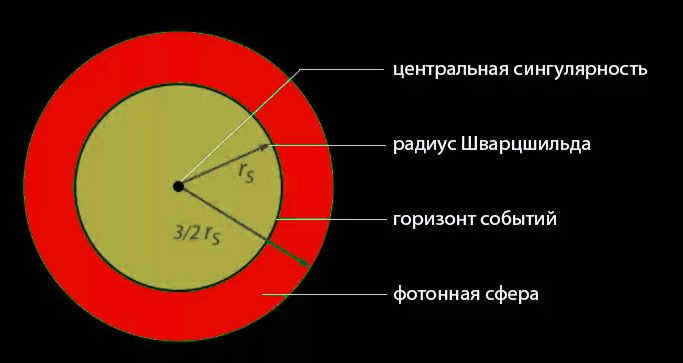
A visual representation of the mechanics of a black hole.
Now, let’s examine your descent from the perspective of an astronomer observing the collapse of a star through a telescope. From this vantage point, the astronomer witnesses the star rapidly shrinking in size once the gas pressure can no longer counterbalance gravity. In just thirty minutes, it diminishes in size from that of the Sun to that of a neutron star. As the compression continues, peculiar phenomena become apparent. Instead of accelerating – given the increasing gravitational force – your descent slows down! Indeed, as you approach the Schwarzschild sphere, gravity becomes infinitely strong.
However, time starts to pass at an incredibly slow rate! If a particle in free fall emits a photon every second to indicate its movement, you will only perceive these photons at intervals of one second, two seconds, three seconds, and so on. As the gravitational field strengthens, the energy of the photons that manage to overcome it diminishes, causing the photons you perceive to become progressively more “red”.
The photons emitted by the particle near the Schwarzschild sphere itself will be separated by intervals of thousands, tens of thousands, or even millions of years. The final photon emitted by the particle as it crosses the Schwarzschild sphere will reach you in an infinitely long period of time and will possess an infinitesimally small amount of energy. In other words, you will never be able to observe this particular photon.
That’s the gist of what the general theory of relativity posits. These celestial bodies are commonly referred to as collapsing stars. However, they are also known by another name – frozen stars. Yet, the most captivating and extravagant moniker for them is black holes.
Black holes are regions where no ray of light can reach an observer. They possess an immense gravitational pull that engulfs everything in their vicinity. Despite not being actual stars, black holes can be seen as an infinitely stretched-out process of star compression. These enigmatic entities continue to captivate theorists and aficionados of the theory of relativity, as their true nature remains unresolved.
Compilation for the website starcatalog.ru, sourced from various open internet sources and the book “Enigmas for Connoisseurs” by Pavel Rafaelovich Amnuel
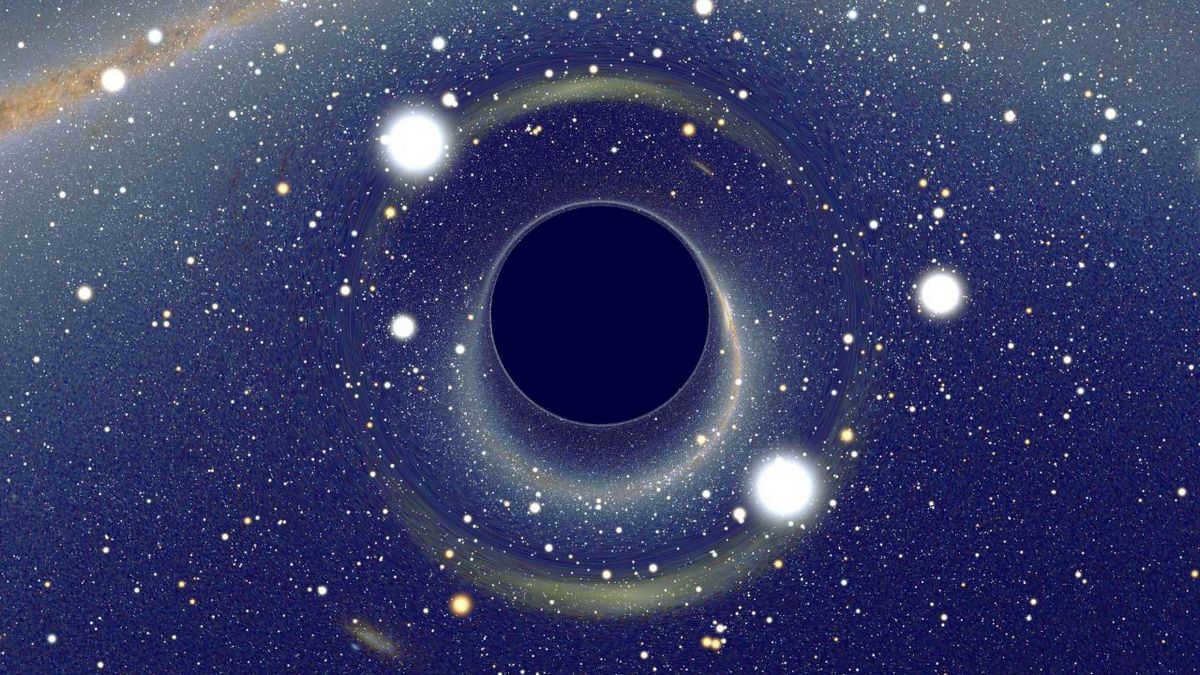
Black holes are among the most peculiar and awe-inspiring entities in the universe. They possess an incredibly high density and an immensely powerful gravitational force, so much so that even light cannot escape their grasp when it comes too close.
The concept of black holes was initially predicted by Albert Einstein in 1916 as part of his general theory of relativity. However, it was not until 1967 that American astronomer John Wheeler coined the term “black hole”. For many years, black holes remained purely theoretical, until the discovery of the first physical black hole in 1971.
In 2019, the collaboration of the Event Horizon Telescope (EHT) made a groundbreaking announcement by unveiling the very first image of a black hole. By observing the event horizon, which marks the point of no return for anything entering a black hole, the EHT telescope captured the black hole located at the heart of the M87 galaxy. This historic image depicts the rapid emission of photons, or light particles, as they approach the black hole. Not only does it provide visual evidence of the existence of black holes, but it also paves the way for further exploration and study in this fascinating field of astrophysics.
Since then, astronomers have classified black holes into three distinct categories: stellar-mass black holes, supermassive black holes, and intermediate-mass black holes. Each type presents unique characteristics and plays a crucial role in understanding the nature of these cosmic phenomena.
Stellar-mass black holes: small yet perilous
Associated articles:
When a star exhausts its final fuel, it may implode or collapse inward. For stars of smaller magnitude (with masses in the range of three times that of the Sun), the core transforms into either a neutron star or a white dwarf. However, when a star of higher magnitude collapses, it continues to shrink and gives rise to a stellar-mass black hole.
Black holes that form from the collapse of individual stars are relatively diminutive but incredibly dense. One such object compresses more than three solar masses into a diameter comparable to that of a single city. As a result, an immense amount of gravitational force acts upon the surrounding objects. Additionally, stellar-mass black holes absorb dust and gas from neighboring galaxies, thereby contributing to their growth in size.
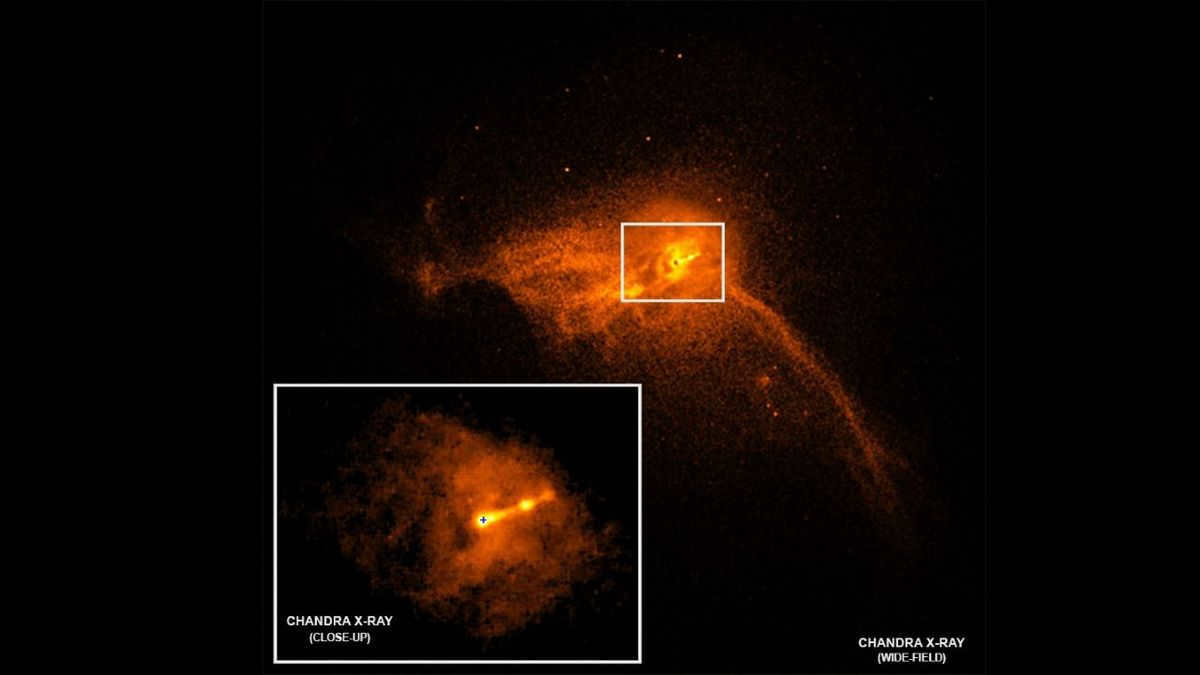
As stated by the Harvard-Smithsonian Center for Astrophysics, the Milky Way is home to numerous stellar-mass black holes, totaling in the hundreds of millions.
Supermassive black holes mark the beginnings of colossal entities
The cosmos is teeming with diminutive black holes, while their counterparts, supermassive black holes, are widespread. These colossal black holes are millions or even trillions of times more massive than our Sun, yet their diameter is roughly equivalent. It is believed that these black holes reside at the core of most galaxies, including our very own Milky Way. The precise origins of these immense black holes remain a mystery to scientists. Once they come into existence, these behemoths accumulate mass from the surrounding dust and gas – materials that are abundant in galactic centers – fueling their growth to even more astonishing proportions.
Black holes of medium mass are the ones caught in the middle
Researchers previously believed that black holes could only exist in small or large sizes. However, new studies have uncovered the potential existence of Intermediate Black Holes (IMBHs). These entities are formed when stars within a cluster collide in a cascading effect. Over time, multiple IMBHs within the same area are expected to merge together at the core of the galaxy, resulting in the formation of a supermassive black hole.
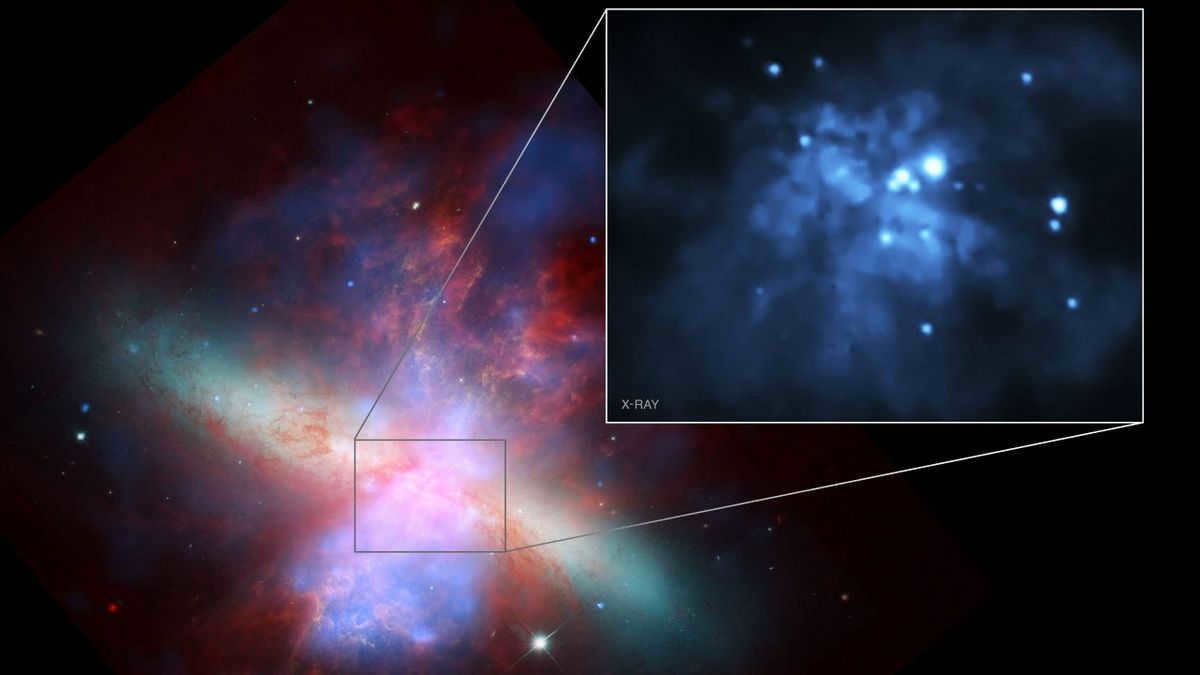
In the year 2014, scientists made a remarkable discovery when they stumbled upon an object that turned out to be an intermediate-mass black hole located in the arm of a spiral galaxy.
“For a long time, astronomers have been diligently searching for these elusive intermediate-mass black holes,” explains Tim Roberts, a co-author of the study from Durham University in the United Kingdom. He goes on to say, “There has been much speculation surrounding their existence, but these intermediate-mass black holes have remained hidden, much like a distant relative who wants nothing to do with being found.”
A more recent study, conducted in 2018, proposes the existence of black holes in the nuclei of dwarf galaxies, which are extremely small galaxies. The study examined 10 of these galaxies, five of which were previously unknown to scientists, and discovered X-ray emissions that are typically associated with black holes. This finding suggests the presence of black holes with masses ranging from 36,000 to 316,000 times that of our sun. The data used in this study was obtained from the Sloan Digital Sky Survey, which analyzed approximately one million galaxies and detected the specific type of light emitted by black holes that are accreting nearby matter.
What is the appearance of black holes?
Black holes consist of three distinct “layers”: an outer horizon, an inner horizon, and a singularity.
The outer horizon of a black hole is the perimeter surrounding the “mouth” of the black hole, from which light cannot escape once it crosses. Gravitational force remains constant across the entire outer horizon.
The inner region of the black hole, where the mass of the object is concentrated, is referred to as the singularity. It is the singular point in space-time where all the mass of the black hole is condensed.
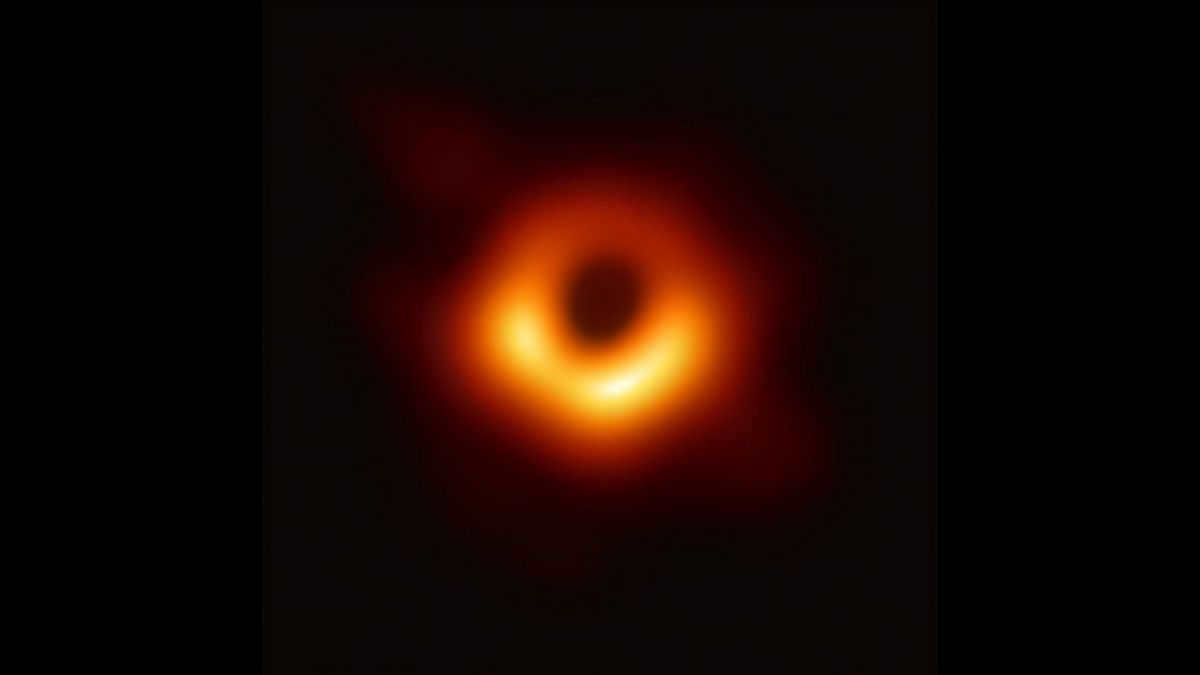
When it comes to black holes, scientists face a unique challenge – they cannot observe them directly like they can with stars and other celestial objects. Instead, astronomers have to rely on a different method: detecting the radiation emitted by a black hole when dust and gas swirl around it. However, this approach becomes difficult when dealing with supermassive black holes located at the center of galaxies, as they can be shrouded in dense dust and gas that obstructs the emitted light.
Interestingly, there are instances when matter, as it spins and plunges towards the black hole, gets pushed back from the event horizon and expelled outwards, rather than being devoured. This results in the emergence of bright jets of matter that travel at speeds close to that of light. Although the black hole itself remains invisible, these powerful jets can be observed from great distances.
The image of the black hole in galaxy M87 captured by the EHT telescope (released in 2019) was a remarkable achievement that demanded extensive research spanning two years, even after the initial acquisition. This was primarily due to the collaborative nature of the telescope, which involved numerous observatories worldwide, resulting in an immense volume of data that exceeded the capacity of internet transmission.
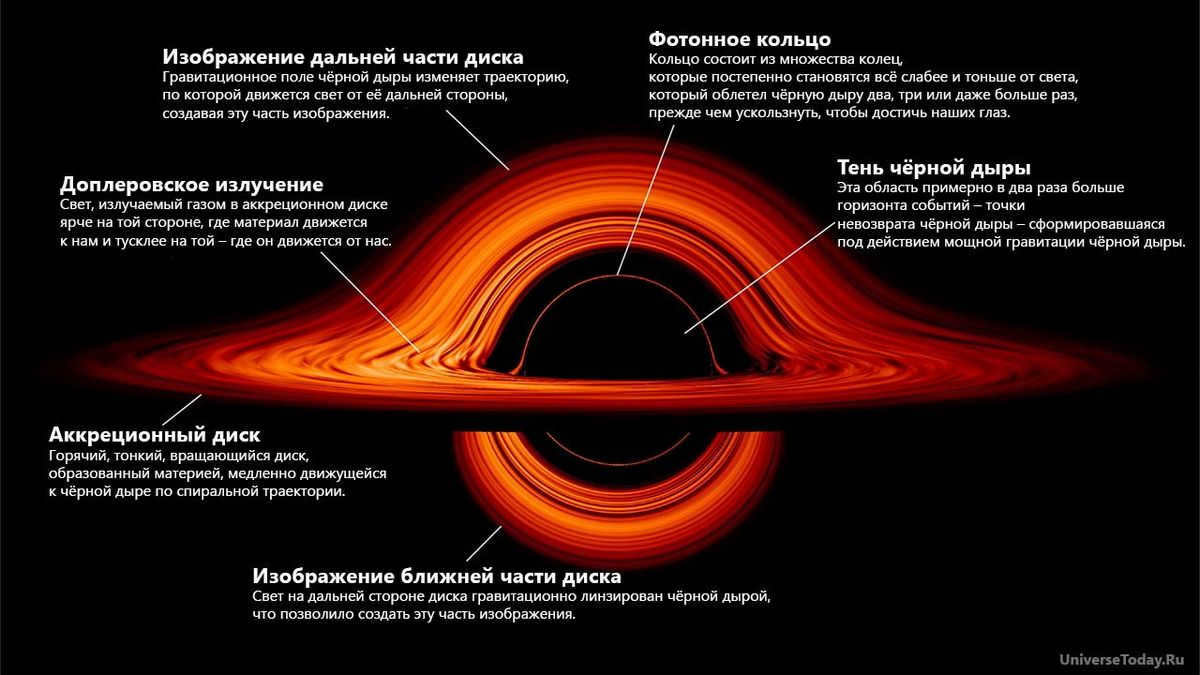
In the future, the scientists have plans to capture images of other black holes and establish a collection of visual representations of these celestial objects. The next objective is likely to be Sagittarius A*, the black hole located at the core of our Milky Way galaxy. Sagittarius A* is of particular interest because it exhibits a level of tranquility that is unexpected. It is speculated that this could be attributed to the presence of magnetic fields that are suppressing its activity, as mentioned in a study conducted in 2019. Additionally, another study conducted this year has revealed that Sagittarius A* is surrounded by a halo of cold gas, providing unparalleled insights into the environment surrounding the black hole.
The brilliant illumination of a system consisting of two black holes in a binary configuration
In 2015, scientists using the Laser Interferometer Gravitational-Wave Observatory (LIGO) made a groundbreaking discovery by detecting gravitational waves emitted during the merger of two black holes with masses comparable to that of stars.
"Thanks to LIGO, we now have even more compelling evidence for the existence of stellar-mass black holes with masses exceeding 20 times that of our Sun. Prior to this groundbreaking observation, we were unaware of the existence of such objects," stated David Schumacher, a spokesperson for the LIGO collaboration.
Furthermore, the observations made by LIGO have provided valuable insights into the rotational behavior of these black holes. When two black holes orbit each other, they can either rotate in the same direction (around their respective axes) or in opposite directions.
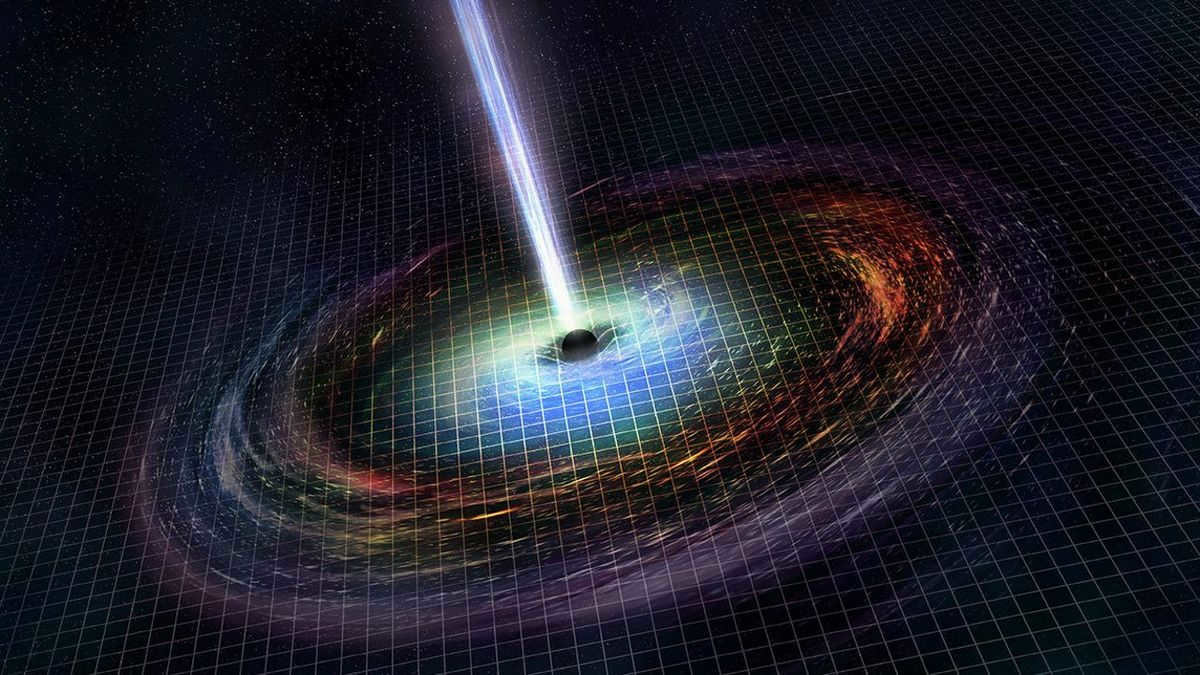
There are two hypotheses concerning the origin of binary black hole systems. The first proposes that both black holes in a pair are created simultaneously from two stars that were born together and died in a nearly simultaneous explosion. The companion stars have the same rotational orientation in relation to each other as the two remaining black holes.
According to the second model, the black holes in the stellar cluster are displaced towards the center of the cluster. In such cases, the rotational directions of the companions should be random with respect to each other. The observation of black hole companions with different spin directions by LIGO provides stronger evidence for this theory of formation.
Unusual facts about black holes
– The concept has long proposed that if an individual were to enter a black hole, the gravitational force would stretch them into a shape similar to spaghetti. Consequently, they would perish before reaching the singularity. However, in 2012, the scientific journal Nature released a study indicating that due to quantum effects, the event horizon behaves like a wall of fire that would instantly incinerate an individual.
– Black holes do not possess the ability to “suck in” objects. Suction occurs when something is forced into a vacuum, which is not the case with black holes. Instead, objects gravitate towards them in a similar manner to how they would be pulled towards a celestial body with a strong gravitational force, such as the Earth.
– Swan X-1 is widely regarded as the first entity to be classified as a black hole. This celestial object played a central role in a friendly bet that took place in 1974 between the renowned physicist Stephen Hawking and his colleague, Kip Thorne. Hawking boldly challenged the notion that Swan X-1 was indeed a black hole, while Thorne held firm in his conviction. Ultimately, in 1990, Hawking graciously admitted his defeat in this intellectual contest.
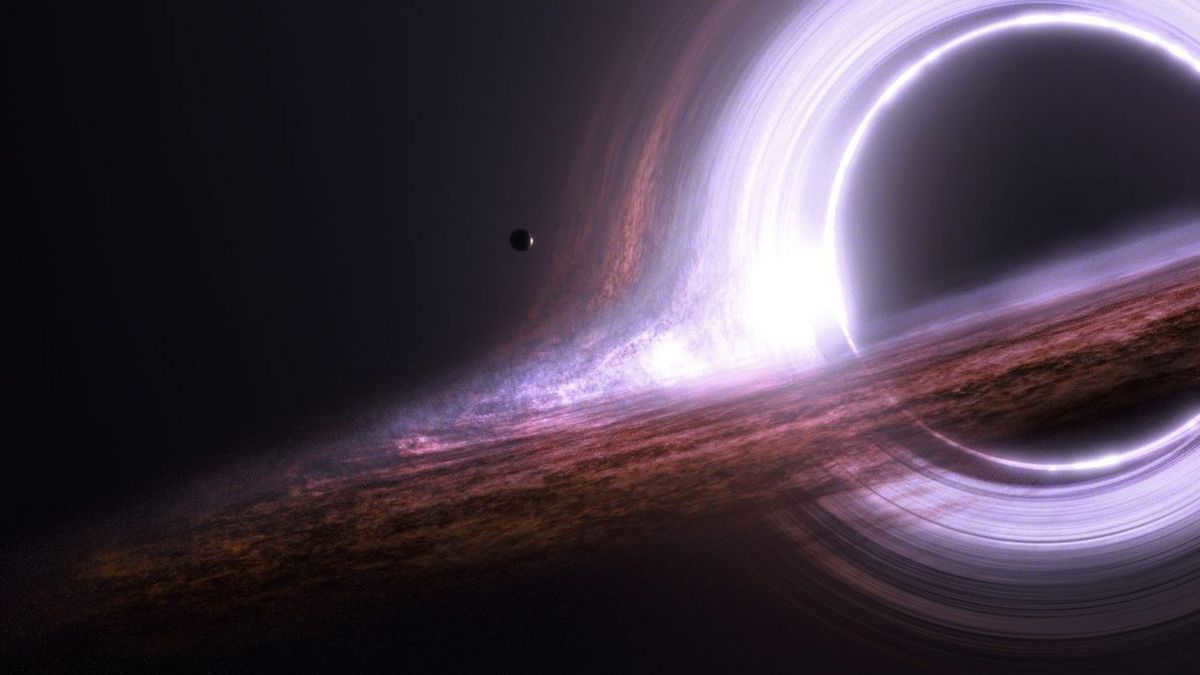
– Shortly after the big bang, it is conceivable that miniature black holes may have emerged. The rapid expansion of space could have caused certain regions to collapse into compact black holes with masses smaller than that of our sun.
– When a star comes into close proximity to a black hole, it has the potential to disintegrate.
– Experts in the field have estimated that within the Milky Way, there exists a range of stellar-mass black holes numbering between 10 million and 1 trillion, with masses roughly equivalent to about three times that of our sun.
– Black holes continue to be a popular topic in science fiction literature and film. Take a look at the film Interstellar, where Thorne utilized scientific concepts in various ways. Thorne’s collaboration with his team of special effects experts enabled scientists to gain a deeper understanding of how distant stars might appear when observed near a rapidly spinning black hole (known as gravitational lensing).
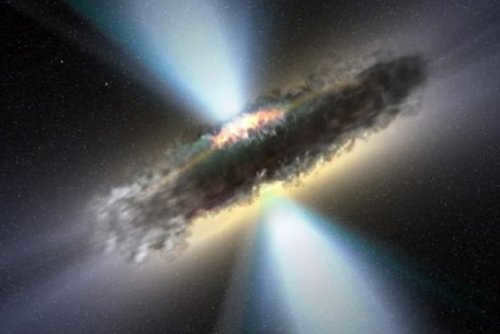
Black holes can be identified by their defining characteristic, the horizon. This boundary marks the point at which nothing, not even light, can escape. When a region becomes permanently separated, it is known as an “event horizon”. If the separation is only temporary, it is referred to as an “apparent horizon”. However, this temporary state could still last longer than the current age of the universe. In cases where a black hole’s horizon is both temporary and long-lived, the distinction between the two becomes less clear.
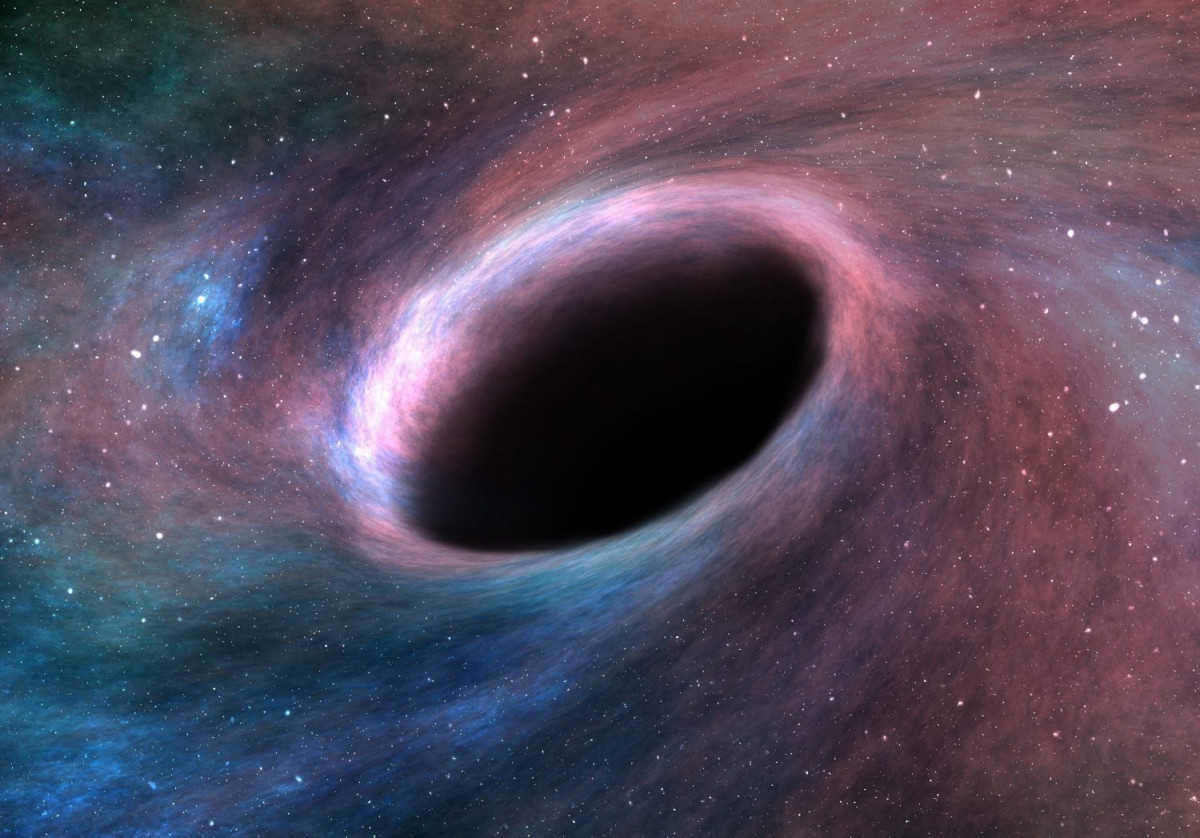
When you pass the boundary, not much changes in your surroundings. This phenomenon is explained by Einstein’s equivalence principle, which states that there is no discernible difference between acceleration in a flat space and the gravitational field that causes the curvature of space. However, an outside observer watching someone fall into a black hole would notice that the person’s movement slows down as they approach the boundary. It’s as if time slows down near the event horizon compared to further away. Eventually, the person crossing the boundary will reach the Schwarzschild radius and find themselves inside the black hole.
What you see when you look towards the horizon is influenced by the gravitational field’s tidal forces. The magnitude of these forces at the horizon is inversely proportional to the mass of the black hole squared. Consequently, the larger and more massive the black hole, the weaker the forces become. As long as the black hole is sufficiently massive, you can cross the horizon without noticing the effects. Physicists refer to the stretching effect caused by these tidal forces as “spaghettification.”
In the early days of the general theory of relativity, it was believed that a singularity was present at the horizon. However, it was later discovered that this was not the case.
Amazing facts about black holes
John Mitchell was the first to propose the idea of black holes
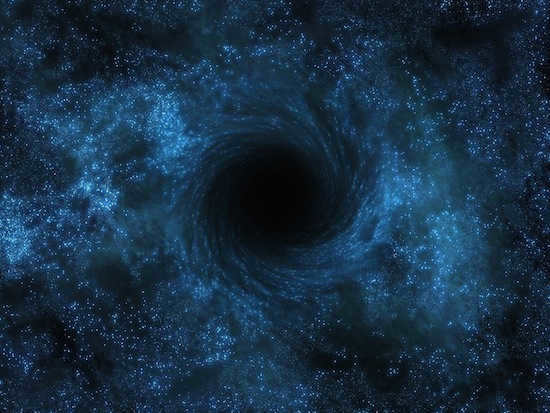
While many people attribute the discovery of black holes to Albert Einstein, it was actually John Mitchell who first considered the idea back in 1783. At the time, Mitchell didn’t know how to apply his theory, so it remained largely unknown.
Mitchell’s theory of black holes was based on his acceptance of Newton’s idea that light consists of tiny particles called photons. He pondered the behavior of these particles in relation to the gravitational field of the star they originated from. He wondered what would happen if the gravitational field was so strong that light couldn’t escape.
Mitchell is credited with being the pioneer of modern seismology. He put forth the theory that earthquakes propagate through the earth like waves.
In reality, they cause a distortion in space around them
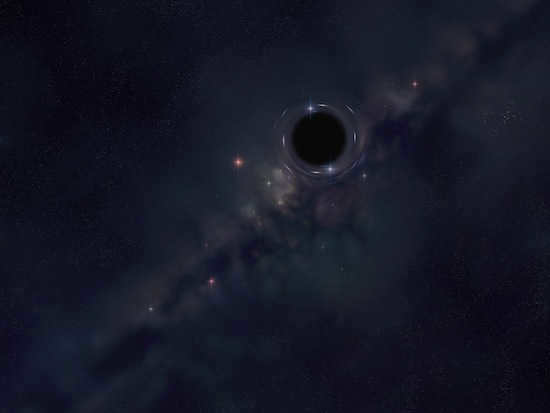
Imagine space as a flexible rubber sheet. Picture the planets as balls that press against this sheet, causing it to warp and distort, eliminating any straight lines. This deformation creates a gravitational field, which in turn explains why planets orbit around stars.
When the mass of an object increases, the distortion of space becomes even more pronounced. These additional distortions amplify the gravitational force, causing orbital motion to accelerate. As a result, satellites speed up as they revolve around objects.
For instance, Mercury orbits the Sun at a velocity of 48 km/s, while stars near the black hole at the center of our galaxy can reach orbital velocities of 4800 km/s.
If the gravitational force is strong enough, a satellite will eventually collide with a larger object.
Black holes can vary in their characteristics
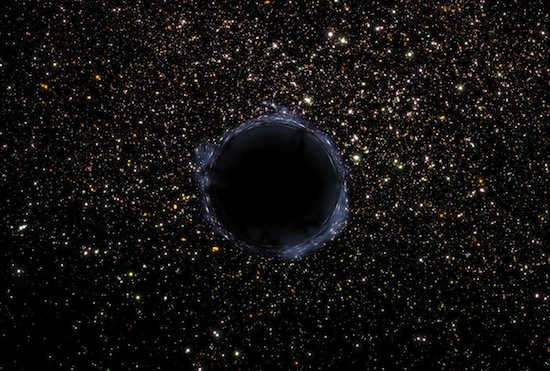
We often believe that all black holes are essentially identical. However, astronomers have recently made the remarkable discovery that they can be classified into various types.
There exist rotating black holes, electrically charged black holes, and even black holes that possess characteristics of both. Traditional black holes are formed through the absorption of matter, while a rotating black hole is created through the fusion of two such holes.
These black holes consume significantly more energy due to the increased disturbance of space. A charged rotating black hole functions like a particle accelerator.
The black hole known as GRS 1915+105 is situated approximately 35,000 light-years away from Earth. It is rotating at a velocity of 950 revolutions per second.
They have an extremely high density
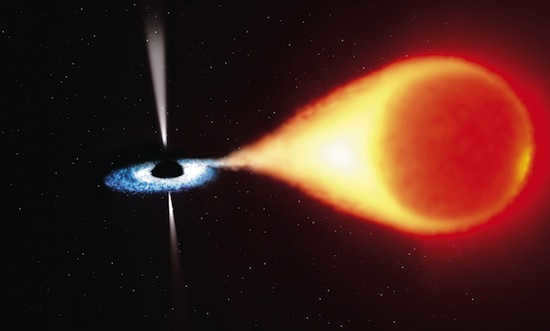
In order for black holes to have a gravitational force strong enough to halt the progress of light, they would need to be excessively massive but incredibly small. For instance, if a black hole were to have the same mass as Earth, it would only measure 9 mm in diameter.
Consider this: a black hole with a mass 4 million times greater than that of the Sun could easily fit in the gap between Mercury and the Sun. Furthermore, black holes located at the center of galaxies can possess masses ranging from 10 to 30 million times greater than that of the Sun.
The combination of an immense mass and minuscule size results in black holes having extraordinarily high densities, and consequently, the forces within them are exceptionally powerful.
There are three categories of black holes
These include stellar, supermassive, and relic holes. The stellar black holes are quite straightforward as they emerge after the “death” of massive stars.
Supermassive black holes exist at the cores of galaxies. Scientists have proposed a few theories regarding their formation: they may have “evolved” from smaller black holes by accumulating matter, or they could have originated from a colossal gas cloud. The primary challenge is that an enormous amount of matter is required to create a supermassive black hole. Furthermore, no supermassive black holes have been discovered thus far. It is possible that there is an alternative method of black hole formation that scientists have yet to uncover.
There is a theoretical concept of relativistic black holes, which are incredibly tiny, even smaller than a proton. Although they are currently beyond our reach, it is believed that these black holes would have emerged in large numbers right after the occurrence of the Big Bang.
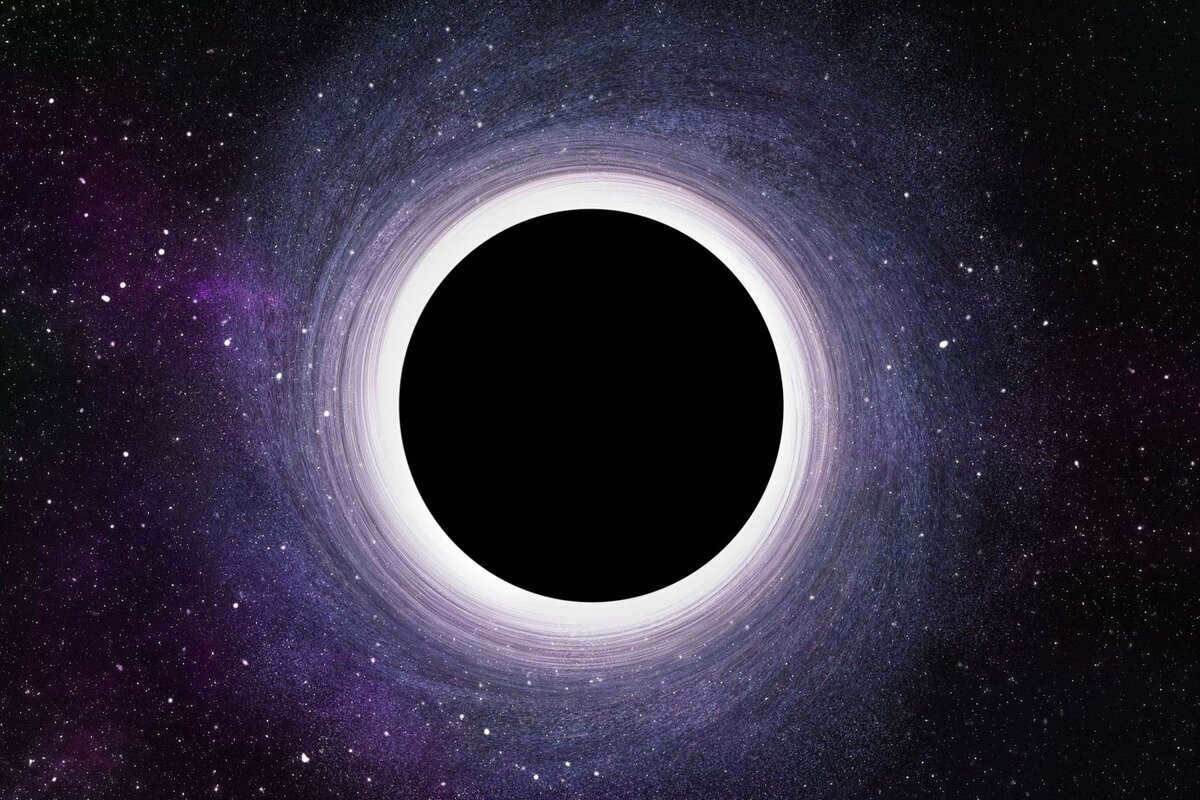
Around black holes, a phenomenon known as an accretion disk can be observed
An accretion disk is a swirling mass of matter that forms around a black hole. This phenomenon occurs when a star gets close to a black hole and is stretched by its gravitational pull.
It’s a sight that is not for the faint-hearted, but it would surely have fascinated Darth Vader.
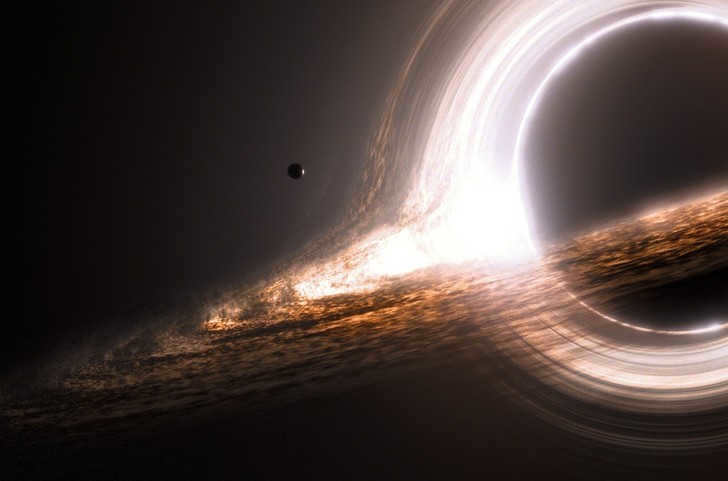
Microscopic Black Holes and the Fascinating World of Wormholes.
Just like the presence of enormous black holes in outer space, there are also comparable mechanisms of qualitative transformation at the atomic level of energy-information interactions between sub-elementary, elementary, and superuniversal particles. The “interatomic space” that exists between electrons and protons is organized, adjusted, and upheld by a multitude of equivalents to “quasars,” “black holes,” “neutrons,” and “supernova stars” that are specific to this realm of microcosmic manifestations. The only difference is that at certain levels of multiple and multidirectional energy-information interactions, there is a strong absorption of a portion of energy, while at other levels, it is released to the subsequent levels of interactions. Each interatomic space possesses “its own galaxies, stars, and planets” which are interconnected through various configurations of continuum resonances of different dimensions in a resonant manner.
“Boundary”, “filter-emitting” properties of individual black holes and quasars generate interdimensional energy-information flows that allow for penetration from one reality to another.
In the vastness of space, at the boundaries of interactions between black holes, there exist regions of immense gravity where distant areas of space can be “glued” together, known to scientists as “space-time tunnels” or “wormholes”. These wormholes can be either transient (such as the Morris-Thorne wormhole) or non-transient, collapsing rapidly (like the Schwarzschild metric). Each black hole is surrounded by an invisible sphere that acts as a point of no return, as the gravitational forces exerted on any object (including atoms) that enters it are so strong that they stretch and ultimately tear apart the object. The “reverse” (from the subjective observer’s perspective) propagation of forces leads to another type of universe, with the space-time between the two universes referred to as an “Einstein-Rosen bridge” (or “wormhole”).
A wormhole is distinct from a black hole in that it lacks an event horizon. While matter is unable to traverse through the wormhole, light can pass through it, and the light emitted exhibits a specific angular dispersion. In other words, when observing the entrance of the spacetime wormhole, one would perceive a luminous ring, with its intensity growing towards the outer circumference. Theoretically, at the center of this ring, we would observe light originating from distant galaxies situated on the opposing side of the spacetime tunnel.
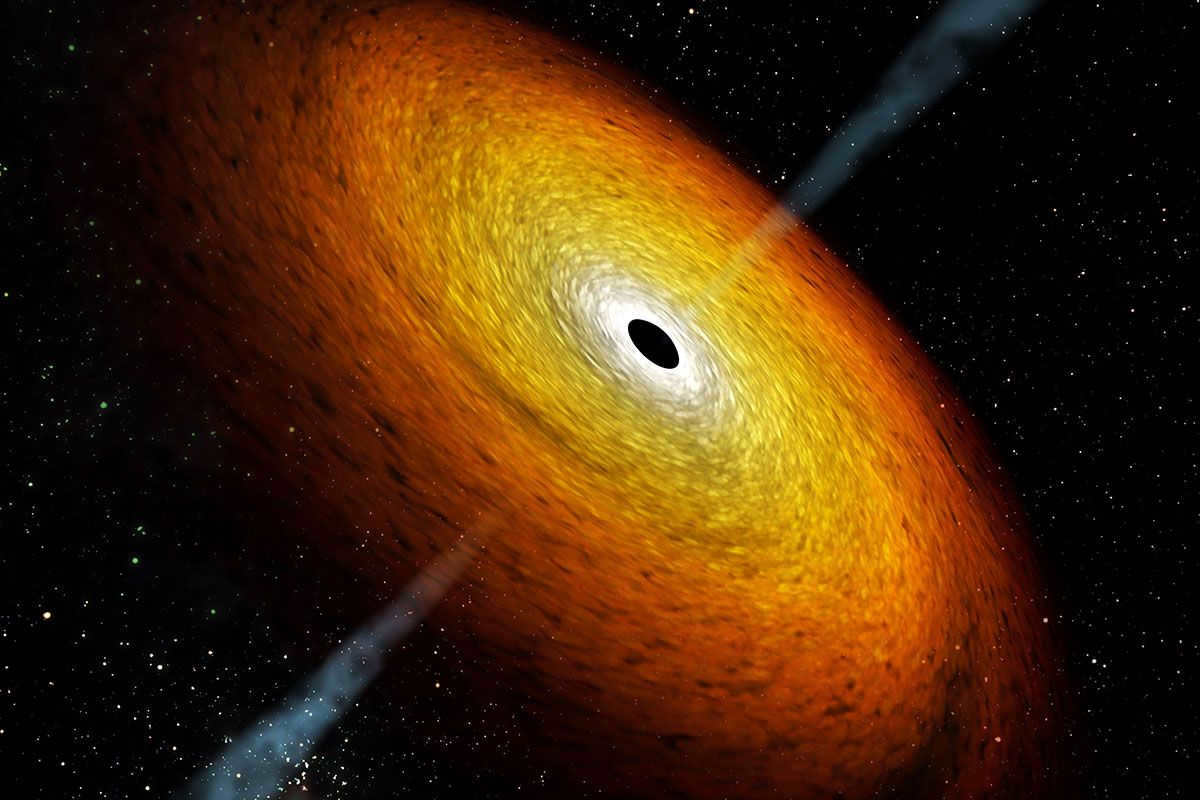
Quasars, the brightest objects in the universe, are brought into existence by them
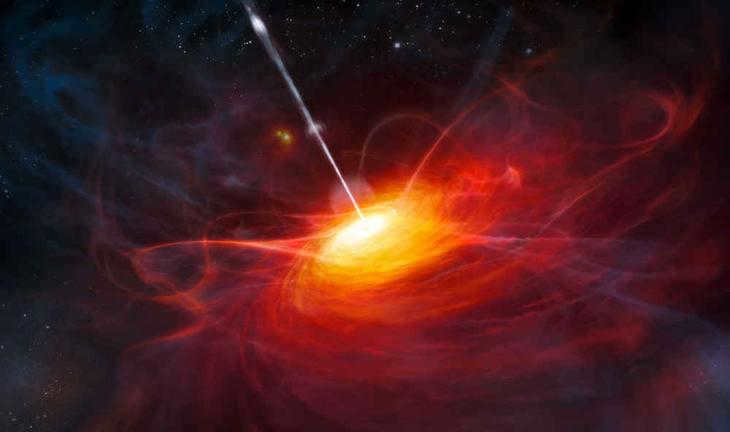
Quasars, the most powerful and brightest entities in the universe, have a unique attribute. The quasar called S5 0014+81 is 300 trillion times more luminous than the Sun or 25,000 times brighter than all the stars in the Milky Way combined. The colossal black hole at the core of each quasar is responsible for generating such immense energy, as it is being fed and prepared for its ultimate demise.
A black hole is not actually a hole.
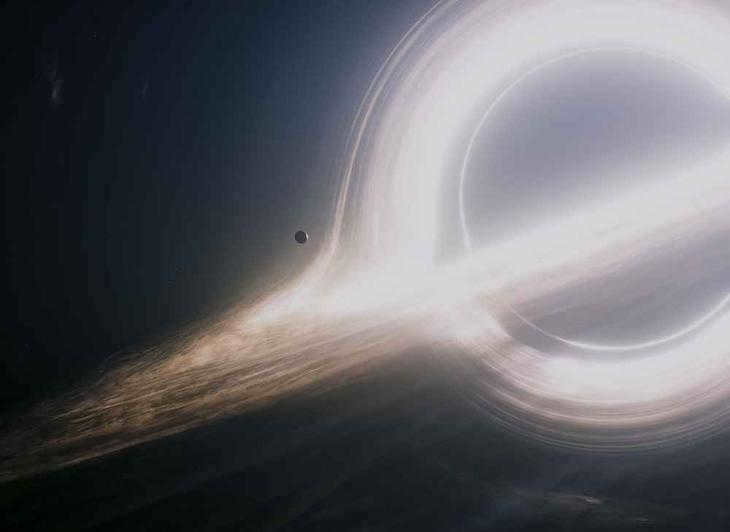
This is a bullet. And, to the best of our knowledge, it does not possess wormholes that lead to alternate realities like those depicted in the movie Interstellar.
These bullets have the power to manipulate time…
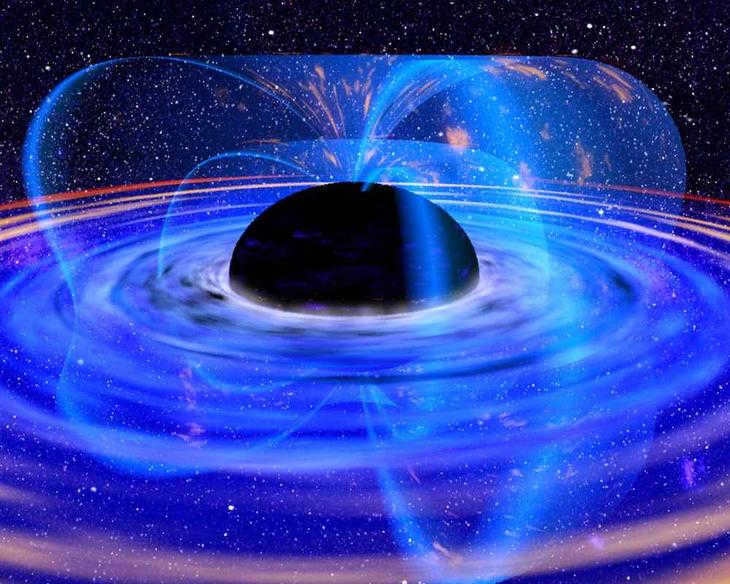
The gravitational pull of a black hole is so powerful that as you approach the event horizon, time seems to slow down from the perspective of an external observer.
We are composed of the identical substance
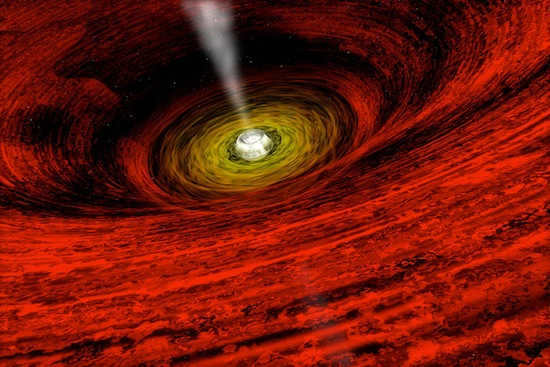
According to certain scientists, the phenomenon of black holes has the potential to contribute to the creation of novel atomic elements as it effectively disintegrates matter into subatomic constituents.
These subatomic particles play a crucial role in the genesis of stars, which subsequently leads to the emergence of elements that are heavier than helium, including but not limited to iron and carbon, which are instrumental in the origination of solid planetary bodies and life as we know it. These elements constitute an integral part of any object that possesses mass, including both you and me.
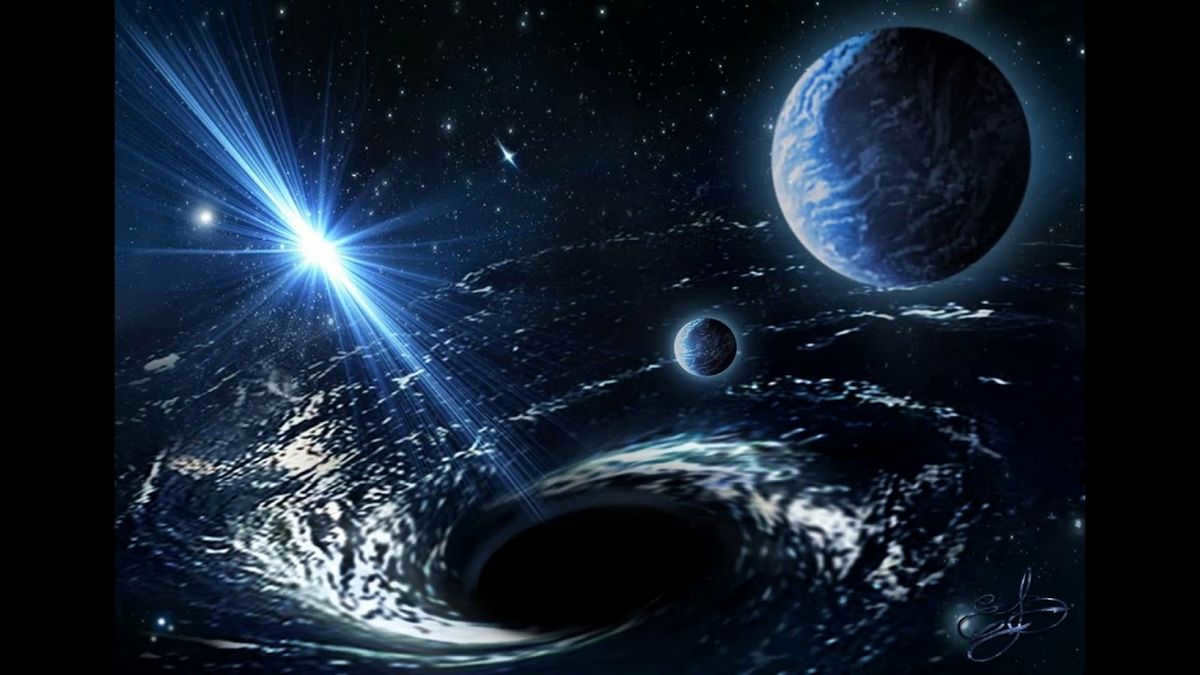
Scientists hypothesize that the center of most galaxies, including our own Milky Way, is home to an incredibly massive black hole. These colossal objects play a crucial role in maintaining the structure and stability of galaxies throughout the vastness of space.
One such black hole, known as Sagittarius A, resides at the core of our Milky Way. With a mass 4 million times greater than that of our Sun, Sagittarius A exerts a gravitational pull that extends for 26,000 light-years. It is one of the rare black holes in the universe that allows astronomers to observe the surrounding matter as it flows towards its event horizon.
There is an infinite number of black holes in the cosmos
Merely within our galaxy, there exist over 100 million stellar black holes, along with the colossal supermassive star Sagittarius A situated at its core. Attempting to tally the quantity of grains of sand on Earth is akin to counting the number of supermassive monstrosities nestled within nearly 100 billion galaxies, each harboring 100 million black holes of stellar-mass (while other classifications remain under investigation).
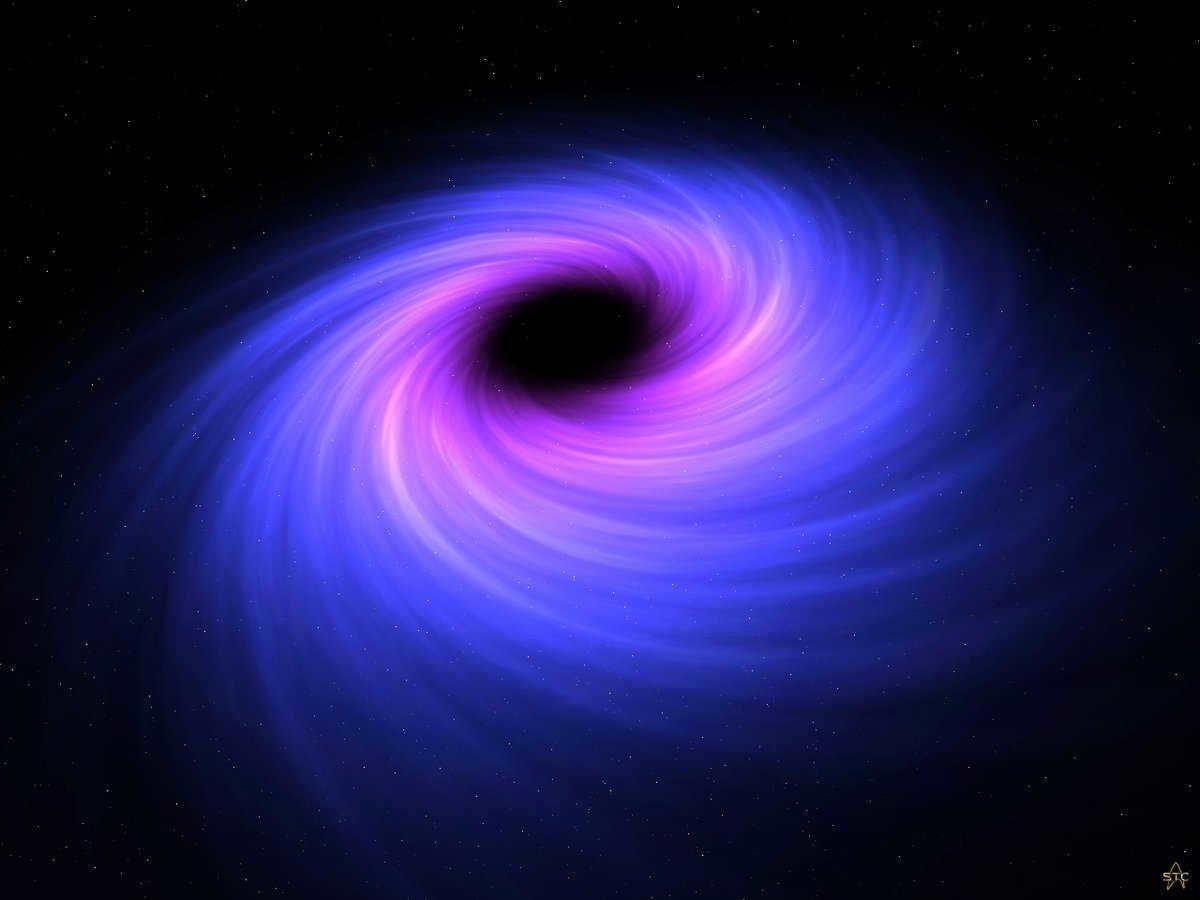
Black holes do not consume matter
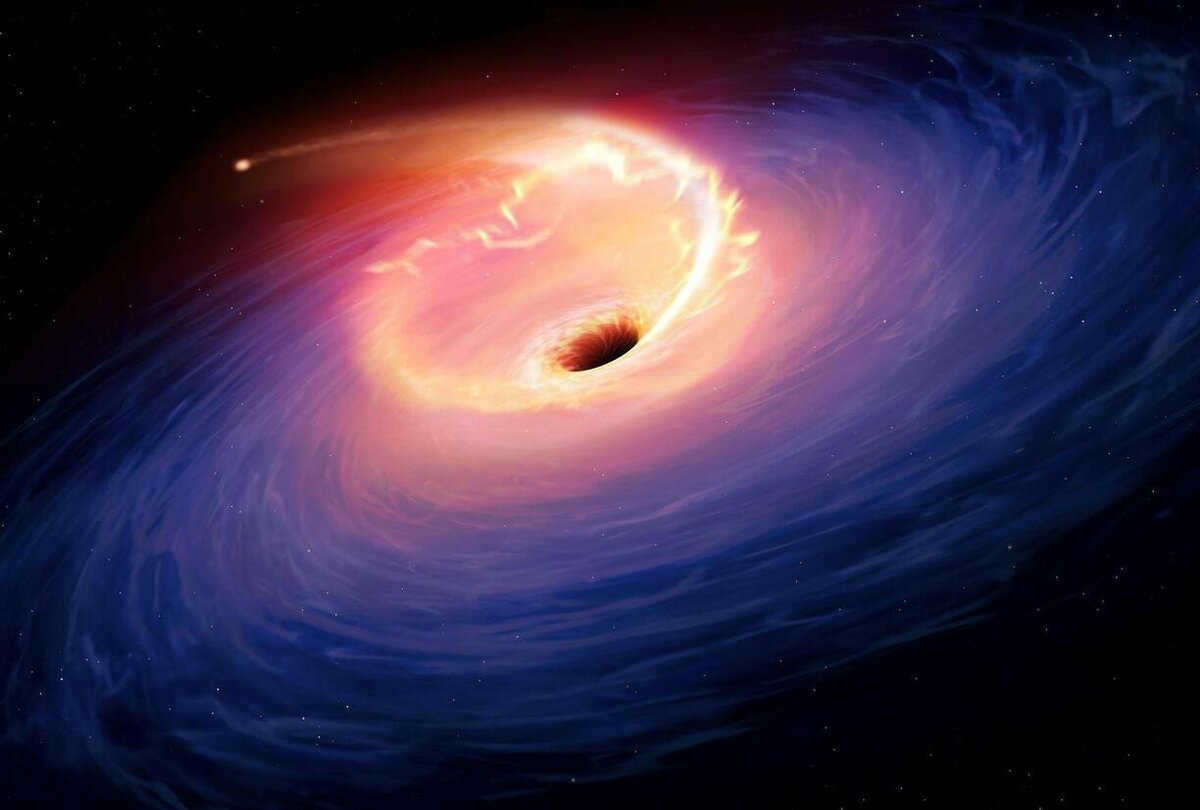
Many people often have the misconception that a black hole acts as a cosmic vacuum, sucking matter out of everything in its vicinity. However, this is not entirely accurate. Black holes are actually similar to any other celestial body, but they possess an immense gravitational force that affects the space surrounding them. This gravitational force causes the matter around the black hole to accelerate rapidly.
Even if we were to replace our Sun with a black hole of the same mass, the Earth would not plummet into it. The black hole would possess the same gravitational field as the Sun, meaning that the Earth and other planets would continue to orbit around it, just as they currently orbit around the Sun.
Additionally, it is important to note that the Sun is not large enough to ever transform into a black hole.
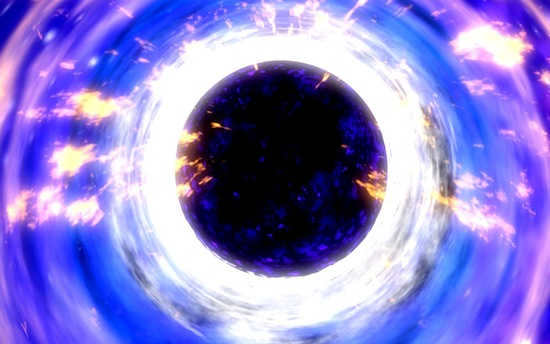
The renowned astrophysicist Carl Sagan once famously stated that the number of stars in the Universe exceeds the amount of grains of sand found on the world’s beaches. However, recent research suggests that there are only 1,022 stars in the entire universe.
This estimation is based on the presence of black holes. When black holes release particle streams, these streams expand into bubbles that travel through regions where stars are formed. These star-forming regions consist of gas clouds that have the potential to cool down and give birth to new stars. However, the particle streams emitted by black holes heat up these gas clouds, preventing the formation of stars.
This discovery implies that there exists a delicate equilibrium between the quantity of stars and the activity of black holes. If a galaxy contains an excessive amount of stars, it becomes excessively hot and volatile, inhibiting the development of life. Conversely, a scarcity of stars also hampers the conditions necessary for life to thrive.
Escaping a Black Hole: Unraveling the Mystery of Information
For decades, physicists have grappled with the perplexing question of what becomes of the information carried by particles that venture into the depths of black holes.
According to the laws of quantum physics, information cannot be obliterated. Yet, if it is unable to escape the gravitational clutches of a black hole, it is seemingly wiped out, contradicting the fundamental principles of quantum mechanics.
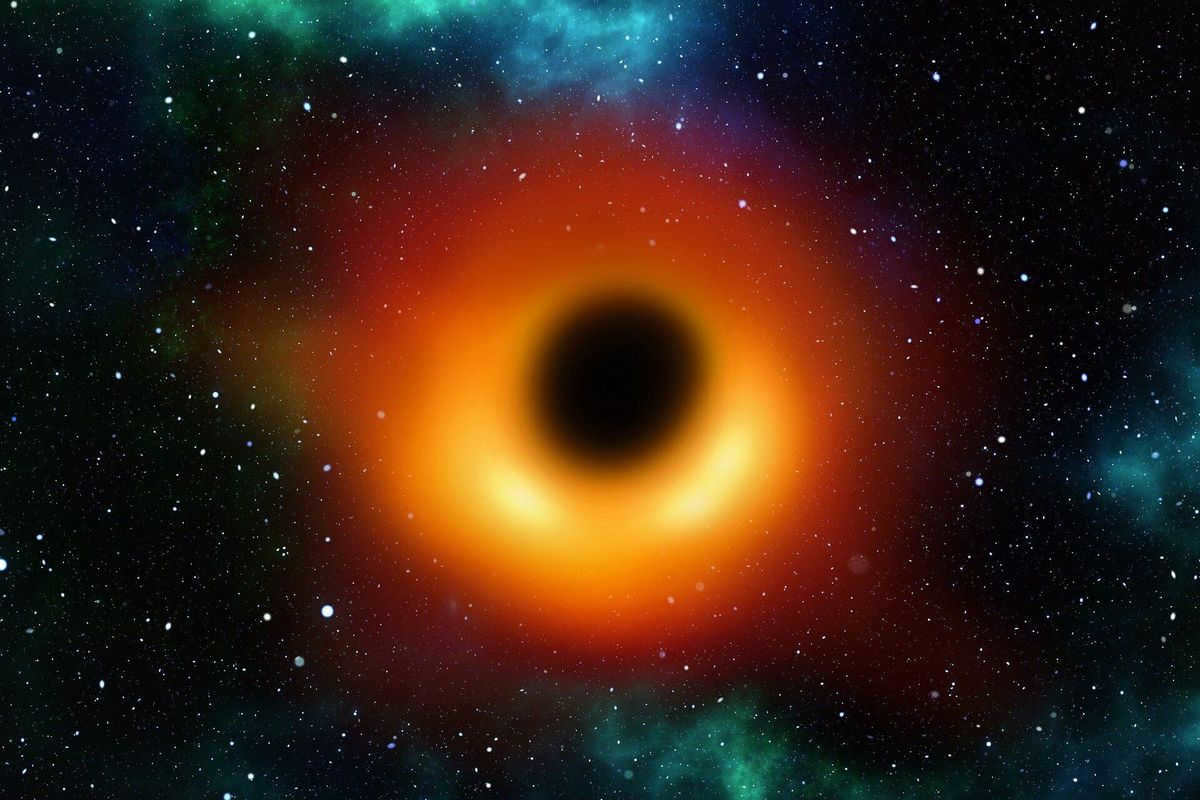
As per the statements made by Stephen Hawking, information does not enter a black hole.
“Instead of being stored within the black hole, information is stored at the boundary of the black hole, which is known as the event horizon.” – Stephen Hawking
When an object gets sucked into a black hole, its information gets captured and stored at the event horizon. While the object may get destroyed inside the black hole, the information remains in a blurry state at the event horizon.
The information has the potential to escape through Hawking radiation, but in a disorganized and useless form. In theory, this could occur in another universe. Hawking proposed that black holes are not the everlasting prisons they were previously believed to be.
They excel at generating power
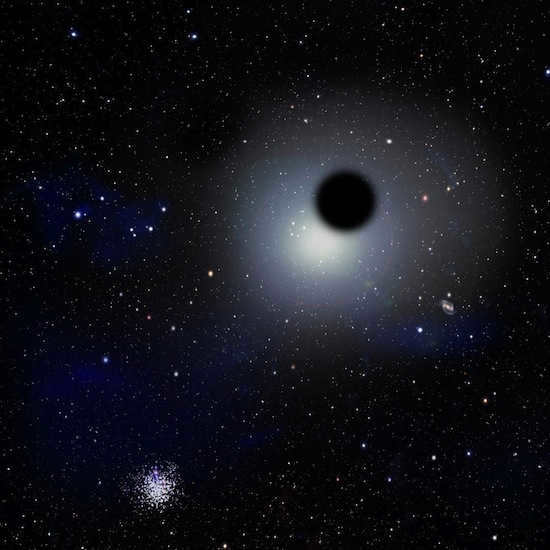
Black holes have the ability to attract and consume all the matter around them. Once inside a black hole, the extreme gravitational forces cause the compression of matter to such an extent that even the space between atoms becomes compressed. As a result, subatomic particles are able to escape from the black hole. These particles are then expelled from the black hole by magnetic field lines that intersect the event horizon.
This process of particle release generates energy in a remarkably efficient manner. In fact, the conversion of mass to energy through this mechanism is 50 times more efficient than nuclear fusion.
The process of black holes vanishing
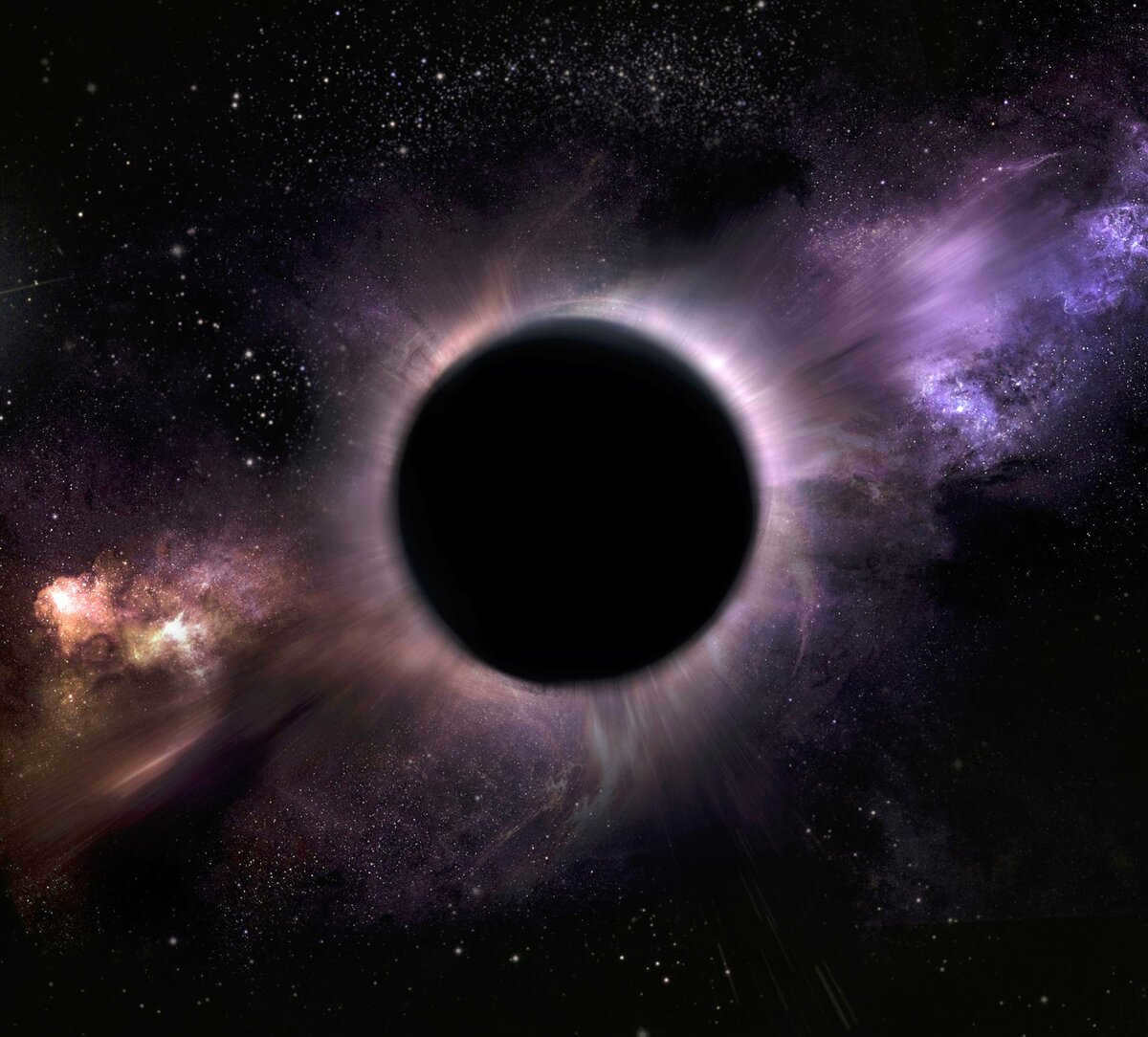
Up until now, the disappearance of a black hole has never been observed by scientists, leaving its lifetime a mystery. Stephen Hawking has proposed a theory known as black hole evaporation, aiming to shed light on this phenomenon.
Hawking’s theory revolves around the concept of virtual particles, which are pairs of minuscule objects that regularly emerge in a vacuum. If these virtual particles are generated at the event horizon’s boundary, they will subsequently collapse. One of the particles will journey towards the center of the black hole, while the other will move away from it. As a result, the first particle will possess negative energy. Consequently, the black hole will lose an amount of mass equivalent to its own mass.
There is no way to avoid being drawn to them
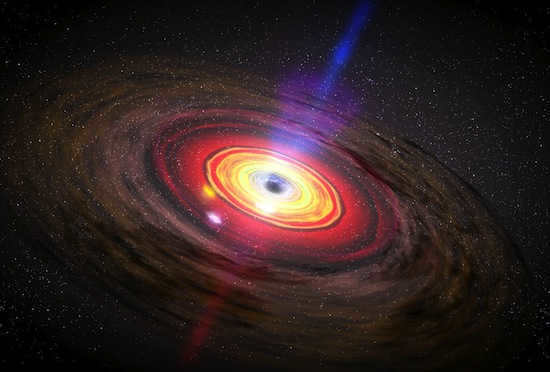
When an object, such as a planet, star, galaxy, or even a particle of light, comes too close to a black hole, it will inevitably be captured by the immense gravitational force of the black hole. However, if another force, like a powerful rocket, is able to counteract the gravitational pull of the black hole, the object can avoid being consumed by it.
That is, until it reaches the event horizon – the point of no return for anything that enters a black hole. Once an object crosses the event horizon, it becomes impossible for it to escape the black hole’s gravitational grip. In order to overcome the intense gravitational force and leave the event horizon, an object would need to accelerate faster than the speed of light, which is currently deemed impossible.
This is why the inside of a black hole remains a mystery to us – since light cannot escape its gravitational pull, we are unable to observe or explore its dark depths.
According to scientists, it is believed that prior to reaching the event horizon, even a minuscule black hole would cause your body to be ripped apart. The gravitational force intensifies as you approach a planet, star, or black hole. If you happen to be moving towards a black hole with your feet leading the way, the gravitational force experienced by your feet would be significantly higher compared to that experienced by your head. This is the exact mechanism that would result in your body being torn apart.
Our star, the Sun, is not destined to become a black hole
In order for a star to transform into a black hole, it must have a minimum mass of 30-40 times that of the Sun. However, our Sun is not massive enough to meet this criteria. Instead, it is projected to evolve into a white dwarf in approximately 4 billion years.
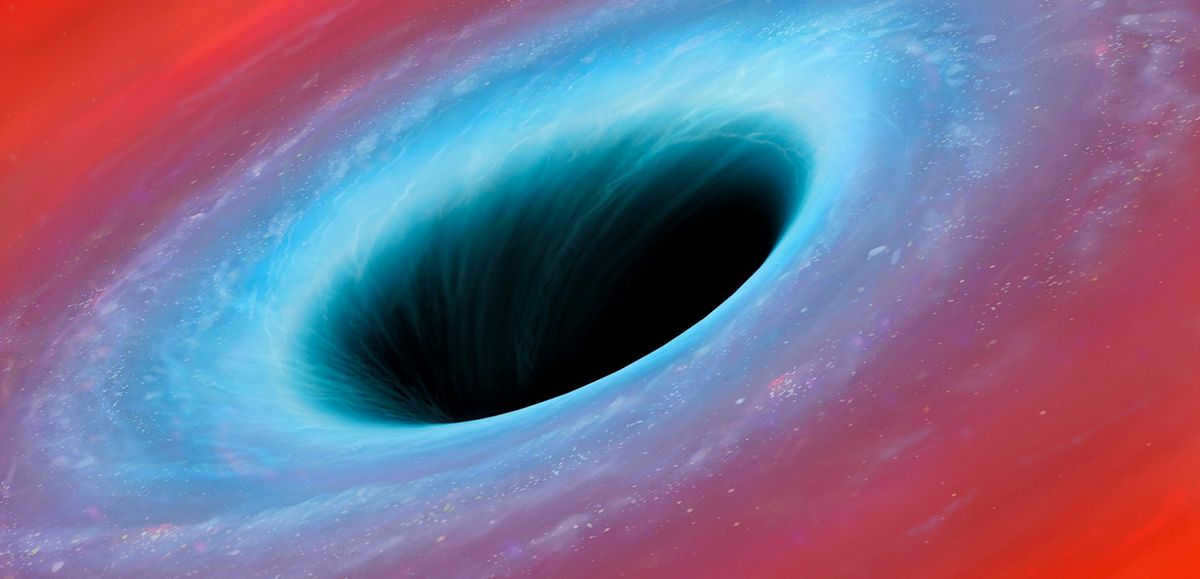
There exists a hypothesis suggesting that our existence is within a black hole
This particular theory is not widely accepted by astronomers, however, they cannot entirely dismiss it. It postulates that the creation of the universe, known as the Big Bang, is essentially the result of a black hole’s formation, and furthermore, posits the existence of a meta-universe containing numerous comparable black holes. Nevertheless, surpassing our event horizon would demand an energy magnitude surpassing even that of the Big Bang.
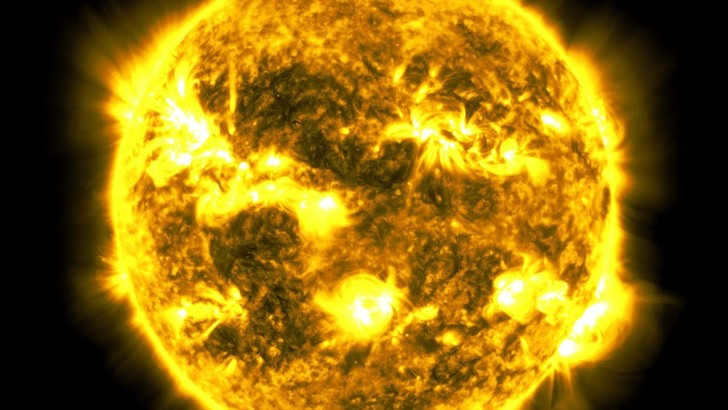
The brilliance of twin black holes
In 2015, scientists utilizing the Laser Interferometer Gravitational-Wave Observatory (LIGO) made their initial discovery of gravitational waves. Subsequently, numerous additional occurrences of this nature have been observed through the utilization of this instrument. Gravitational waves witnessed by LIGO take place during the merging of minuscule black holes.
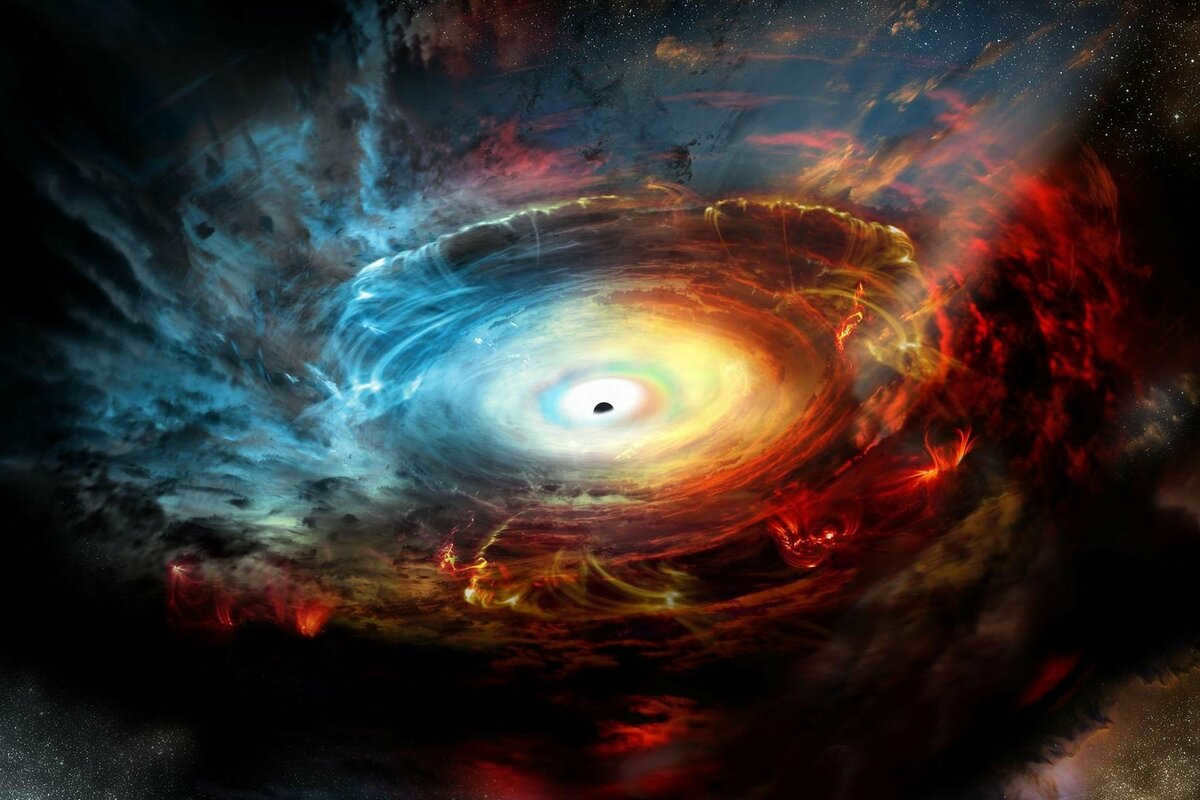
The observations made by LIGO also offer insights into the rotational orientation of black holes. When a pair of black holes orbit each other, it is possible for them to spin in the same direction. Alternatively, their rotations could be completely independent of each other.
There are two prevailing theories regarding the formation of binary black holes. The first proposes that they originate from two stars that were created around the same time. These stars would have been born together and reached the end of their lives simultaneously. As a result, the companion stars would have shared a similar rotational orientation. Consequently, the black holes that formed from their remnants would also exhibit a similar rotational pattern.
Based on the second model, the black holes within a star cluster move towards its central region and combine together. These companions possess varying spin orientations in relation to one another. The LIGO detections of black holes exhibiting different spin orientations offer more compelling support for this proposed formation theory.
Previously, scientists held the belief that black holes existed only in small and large sizes. However, recent studies have unveiled the potential existence of intermediate-sized or intermediate black holes (IMBHs). These entities can arise from a series of star collisions within a cluster. Over time, certain stars originating from the same area of space may converge at the core of a galaxy, resulting in the formation of a supermassive black hole.
In the year 2014, astronomers made a groundbreaking discovery of an object which ultimately revealed itself to be a moderately massive black hole. Situated within the spiral arm of a galaxy, this finding has significantly added to our understanding of black holes.
Neutron stars and black holes represent the final stages in the life cycle of massive stars. These dense celestial bodies not only exhibit fascinating phenomena in astrophysics, but also hold significant importance in the field of fundamental physics. It is no coincidence that neutron star research has been recognized with two and a half Nobel Prizes, acknowledging breakthroughs such as the discovery of radio pulsars, the detection of a double pulsar confirming General Relativity, and advancements in X-ray astronomy. This course delves into the diverse sources associated with neutron stars and black holes, explores the evolutionary processes of neutron stars, and discusses the future prospects for research in this captivating field.
Differences between a black hole and a neutron star
A black hole and a neutron star are distinct celestial objects, although they share some similarities.
While a black hole is a type of neutron star, they differ in composition. A black hole is primarily composed of neutrons, whereas a neutron star is made up of a neutron gas, with neutrons existing in a free state.
Additionally, the density of a black hole is much greater than that of a neutron star. A black hole has a density comparable to that of an atomic nucleus, while a neutron star has a lower density.
Related. Black holes are fascinating regions of space-time where the gravitational attraction is incredibly strong. Even objects moving at a very high velocity cannot escape the gravitational pull of a black hole.
Gravitational collapse is responsible for the creation of black holes and neutron stars, when the gravitational compression overpowers the gas pressure within a star. This compression causes the star to shrink to an incredibly small size and achieve a remarkably high density, causing electrons to merge with protons and form neutrons.
It should be noted that free neutrons have an average lifespan of approximately 15 minutes (with a half-life of about 10 minutes). As a result, neutrons within neutron stars and black holes can only exist in a bound state, similar to atomic nuclei. Consequently, a neutron star and a black hole can be likened to a macroscopic-sized atomic nucleus without any protons.
One difference between a black hole, a neutron star, and an atomic nucleus is the absence of protons. Another distinction arises from the fact that in normal atomic nuclei, neutrons and protons are bound together by nuclear forces, also known as “strong” interaction. However, in the case of neutron stars, it is gravity that serves as the binding force for neutrons.
The key point here is that nuclear forces require the presence of protons to bind neutrons together. Neutrons alone cannot form nuclei; there must be at least one proton. On the other hand, gravity does not require any protons to facilitate the binding of neutrons.
Neutron stars and black holes are not affected by this issue because, firstly, gravitational forces have a long-range effect and, secondly, neutron stars and black holes lack positively charged protons.
Under the influence of gravitational forces, neutron stars and black holes take on the shape of a sphere, or more specifically, a rotating ellipsoid, as all neutron stars (and black holes) spin around their axis. They rotate at high speeds, with rotation periods ranging from a few seconds and below.
Related topics: The Big Bang and the Origins of the Universe, The Big Bang Theory, Cosmological Inflation, Black and White Holes, The Cosmological Singularity, The Theory of Relativity and Quantum Gravity, N.
The reality is that neutron stars and black holes are created by the intense compression of ordinary stars due to gravity. As a result, they are expected to rotate at high speeds according to the law of conservation of momentum.
Are the surfaces of black holes and neutron stars solid? Not in the traditional sense of a solid state of matter, but rather as a smooth and clear surface without a neutron atmosphere. It appears that both black holes and neutron stars possess a solid surface. The neutron atmosphere and neutron liquid, which consist of free neutrons, would eventually decay.
However, this does not imply that if, for instance, we were to deposit a “substance” composed of neutrons with the same density as an atomic nucleus onto the exterior of a neutron star or black hole, it would simply remain on the surface. Rather, this hypothetical “substance” would be instantaneously drawn into the interior of the neutron star or black hole.
Distinguishing between black holes and neutron stars
Black holes possess an immense gravitational pull that surpasses the speed of light, resulting in the inability of light to escape from their surface and venture into the vastness of outer space. Consequently, the gravitational forces envelop the light beam, preventing its eternal escape.

Other topics of interest. Outer space, the concept of time, the enigma of black holes. Discover more about the space-time continuum, the mysterious nature of black holes, Albert Einstein’s theory of relativity, the fascinating field of modern cosmology, and the cutting-edge discoveries of modern astrophysics.
If a star is located on the surface of a black hole, the photons emitted by that star initially move upwards but eventually curve and plunge back towards the black hole’s surface. Alternatively, these photons can begin to orbit the black hole in an elliptical path. The latter scenario occurs when the black hole’s surface velocity is lower than the speed of light. In this case, the photon has the potential to escape from the black hole’s surface, but it becomes a permanent companion of the black hole instead.
It is evident that all these considerations pertain not only to visible light, but also to any form of electromagnetic radiation. In other words, not only visible light, but also radio waves, infrared rays, ultraviolet, X-rays, and gamma rays cannot escape the gravitational pull of a black hole. The most that these photons can do is to enter into orbit around the black hole, provided that the speed of light is greater than the escape velocity on the surface of the star.
This is why neutron stars like this are referred to as black holes. Nothing can escape from a black hole, but anything can be drawn in. (The phenomenon of black hole evaporation through quantum tunneling will not be discussed here.)
Therefore, it is evident that there is no actual hole in space. Just like there is no hole in space where a regular neutron star or a regular star would be located.
In the world of science fiction, popular science publications, and TV programs, you may come across the concept of holes in space. These outlets often rely on captivating their audience by presenting facts that are currently unverifiable by the current state of science and technology, but may exist in mathematical models.
It is important to note that mathematical models in physics are always secondary and subject to change as new experimental data becomes available. The general public may not be aware of this, as physics is an experimental science where the focus is on empirical evidence rather than solely mathematical models.
If we were able to stand on the surface of a black hole, our view would be quite different from the starry sky we are used to. Instead, we would be greeted with a fascinating sight – a translucent mirror. This mirror-like surface would reflect not only the black hole itself, but also the surrounding space, as the black hole absorbs all the radiation that comes its way. The light that manages to escape the black hole’s gravitational pull and return to us creates a mesmerizing mirror effect.
This unique phenomenon also occurs with other forms of electromagnetic radiation, such as radio waves, X-rays, and ultraviolet rays. In the presence of a black hole, these forms of radiation also encounter the same translucent “mirror” effect on its surface.
Similarities between white dwarfs, neutron stars, and black holes
What is the common factor among white dwarfs, neutron stars, and black holes? This question often arises when considering the origins and characteristics of these celestial objects.
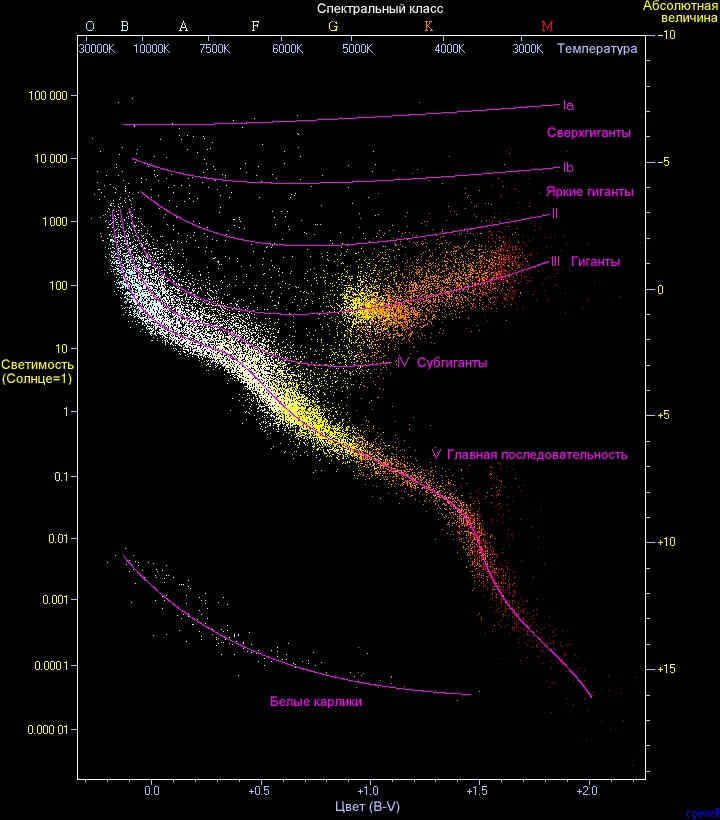
When a star with a relatively low mass depletes its nuclear fuel, it expands by shedding its outer layers. This process creates a planetary nebula, leaving behind a white dwarf at its core. The white dwarf has a radius similar to that of Earth and a slightly greater mass than the Sun’s.
White dwarfs have a low luminosity, making it challenging to detect them in the optical range, as illustrated by the diagram. Nevertheless, one notable white dwarf, known as Sirius B, was successfully observed through a telescope by Alvan Clarke in 1862. Sirius B forms a binary system with Sirius A, also known as Sirius, consisting of a white dwarf and a main sequence star. The orbital period of Sirius B is approximately 50 years.
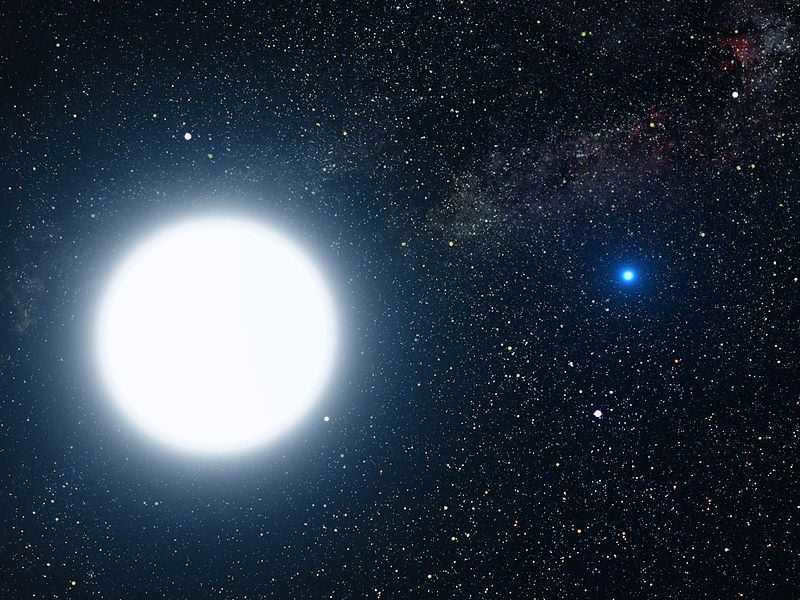

An illustration representing the most probable perspective of the system
If Sirius A is still in its active phase, then Sirius B must have been significantly more massive in the past. This is because heavy stars undergo thermonuclear fusion at a faster rate, leading to an earlier “death”. At a certain point, Sirius B transformed into a red giant and subsequently shed its outer layers. However, it is worth noting that most white dwarfs are considered part of the “invisible” astronomy.
They can be detected in the X-ray range. The field of X-ray astronomy is a relatively new development, emerging in the mid-twentieth century. As a comparison, when observing the Sirius system, Sirius A appears dimmer than Sirius B, despite the fact that Sirius A’s luminosity is several orders of magnitude greater in the visible range.
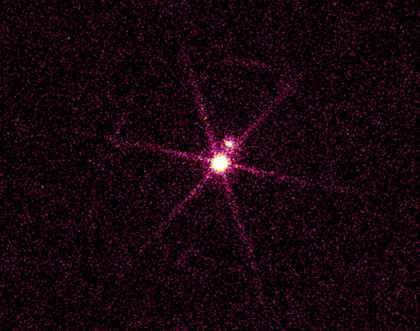
In a closely connected gravitational system, a white dwarf can exist when material from a nearby star is drawn towards it.
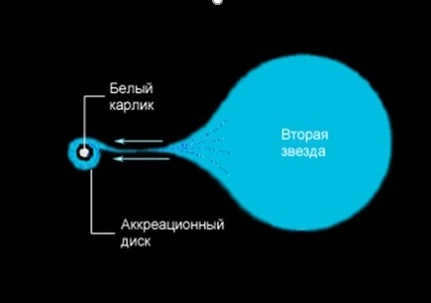
A neutron star is also one of the final stages of a star’s life, but it requires a higher mass for the star to reach this point. It is logical to assume that neutron stars are predominantly composed of neutrons. How does this happen? Atoms consist of neutrons and protons in the nucleus, as well as electrons. At incredibly high densities, electrons combine with protons, resulting in the formation of neutrons. Interestingly, this process also produces neutrinos.
The general structure of a neutron star:
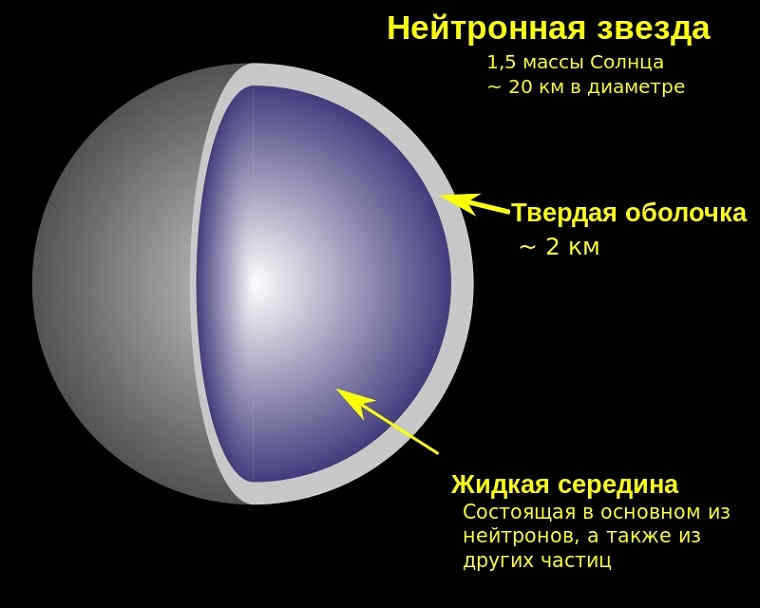
The solid shell is composed of various chemical elements.
Some neutron stars rotate at incredibly high speeds, spinning several hundred times per second. Additionally, they possess powerful magnetic fields.
Neutron stars can be divided into the following categories:
- Ejectors, also known as radio pulsars, emit charged particles in the radio frequency range.
- Accretors, or X-ray pulsars, have matter that accumulates on their surface, heating up to extremely high temperatures and emitting X-rays.
- Georotators have magnetic fields that prevent matter from reaching the star.
Propellers, a less extensively studied type, are likely to be unremarkable and resemble ordinary neutron stars.
Let’s now focus on accretors. These neutron stars possess specific properties, such as a low rotational velocity and an appropriate magnetic field, that enable them to exist in binary systems.
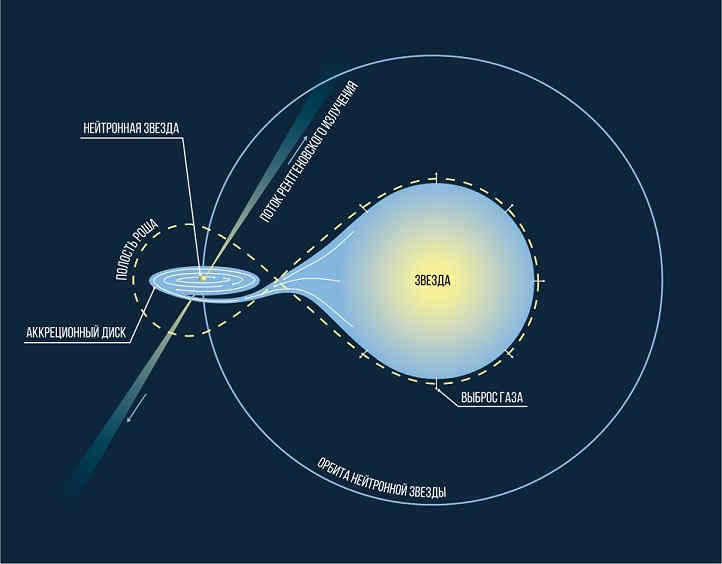
Systems containing neutron stars serve as highly influential sources of X-ray radiation. The material from the cooling star gravitates towards the accretor. Once this material reaches the surface, a significant amount of gravitational potential energy is released. As a result, the surrounding gas begins to heat up to temperatures in the range of a few million kelvins and emits X-rays.
Now let’s discuss black holes. In the general sense, they are regions of the universe where the gravitational attraction is so immense that even photons cannot escape. The escape velocity of black holes exceeds the speed of light. One possible explanation for their formation is the final stage of the evolution of stars with masses much greater than that of the Sun. Stellar-mass black holes represent one component of a system known as a microquasar.
